🇨🇷 Backpacking in Costa Rica

In May 2021 we packed our bags and left for Costa Rica. Originally having planned to do this trip a few months earlier, we had already quit our jobs and were solely waiting for the COVID-19 restrictions to be lifted for international travellers leaving the UK. A few stressful hours at the airport, one short layover in Madrid and 13 hours later we landed in San José, where our adventure begins.
The route
We didn’t have a pre-planned route. We had a list of destinations and landmarks that we wanted to visit so we had a rough idea of where we wanted to go. Below you can see what our route ended up looking like at the end of the trip.
San Jose → Puerto Viejo → La Fortuna → Monteverde → Quepos → Uvita → Puerto Jimenez → COPROT → Drake’s Bay → Jaco → Santa Teresa → Samara → Tamarindo
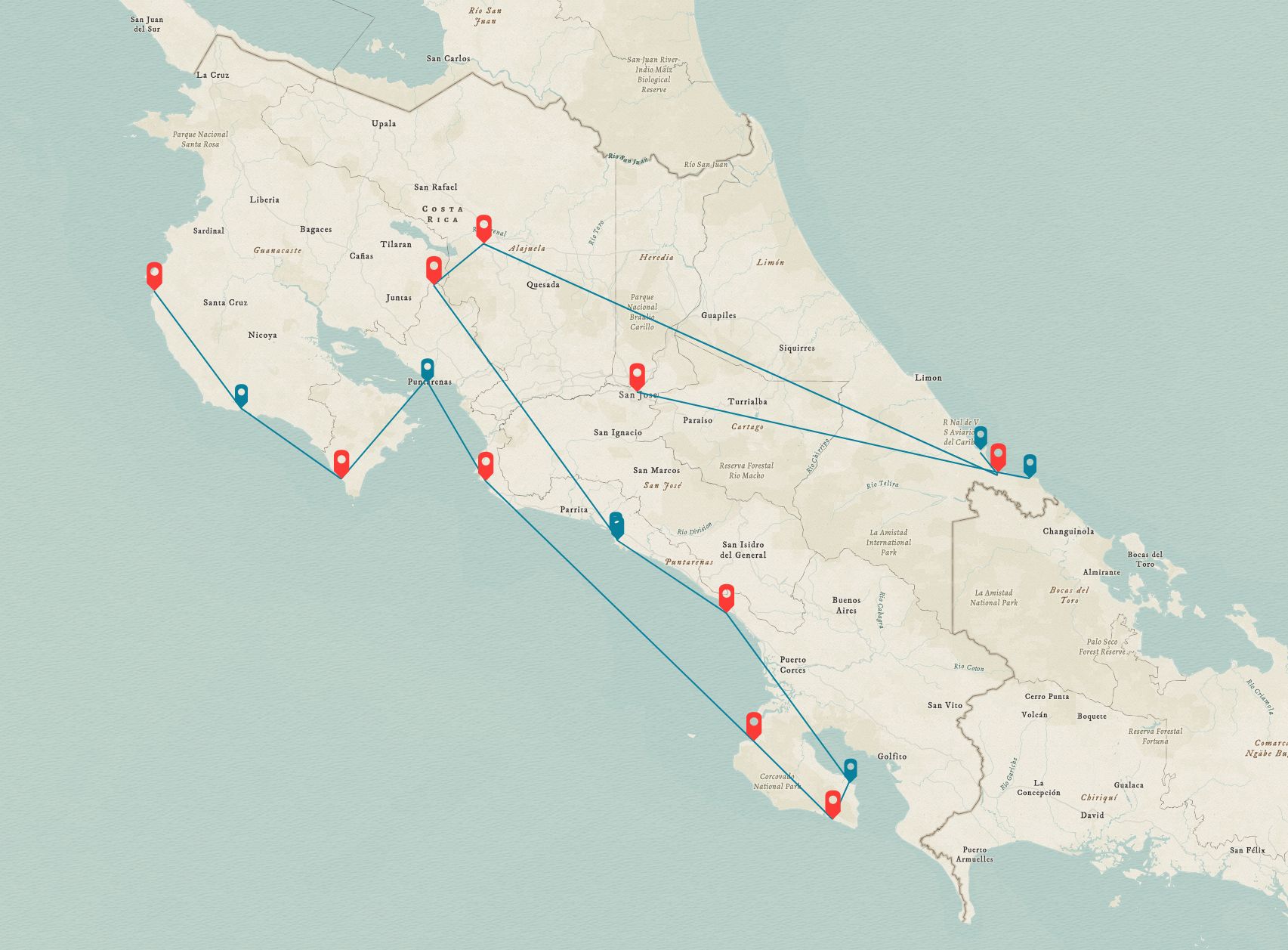 The red points are generally larger towns that we stayed in for longer; the blue are smaller ones that we either visited for a day or only stayed in briefly.
The red points are generally larger towns that we stayed in for longer; the blue are smaller ones that we either visited for a day or only stayed in briefly.
San José
The capital, located in the heart of the country, is unfortunately nothing to get excited about. Apart from the central market and a couple of above average buildings, there isn’t much else. Having said that we decided to kill some time at the Pre-Columbian Gold Museum, which was very interesting and showed a lot about the roots of the country. The market, a maze of narrow alleys and stores full of souvenirs (and smelly agglomerations of meat and fish), was a bit disappointing. It was dark and cramped and made me feel a bit unsafe; the neighborhood is not a good one.
In fact, the most fun we had was away from the center - Barrio Escalante - streets filled with chic restaurants and bars, offering delicious but rather expensive food.
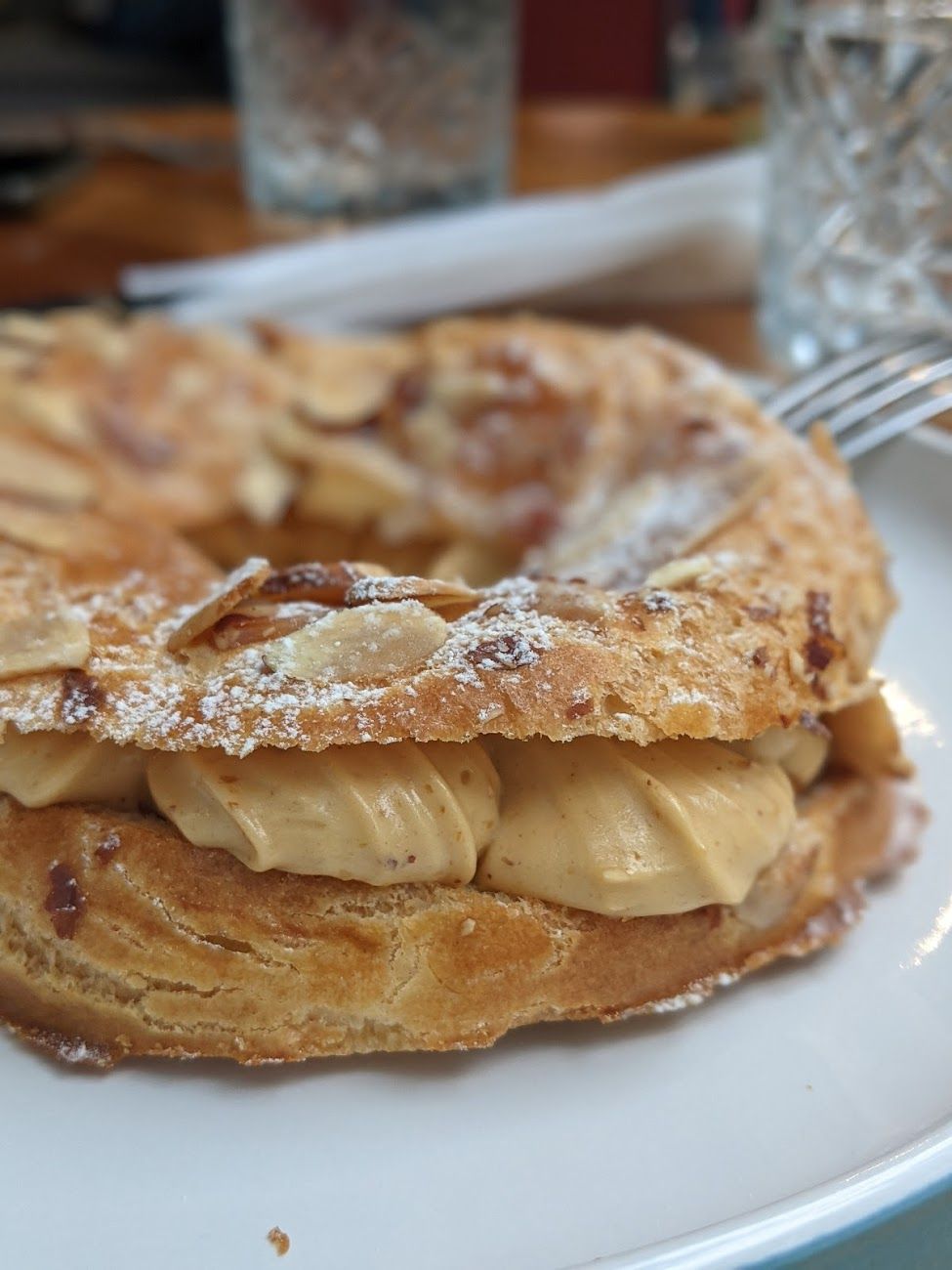 Dessert at Franco’s Dessert at Franco’s |
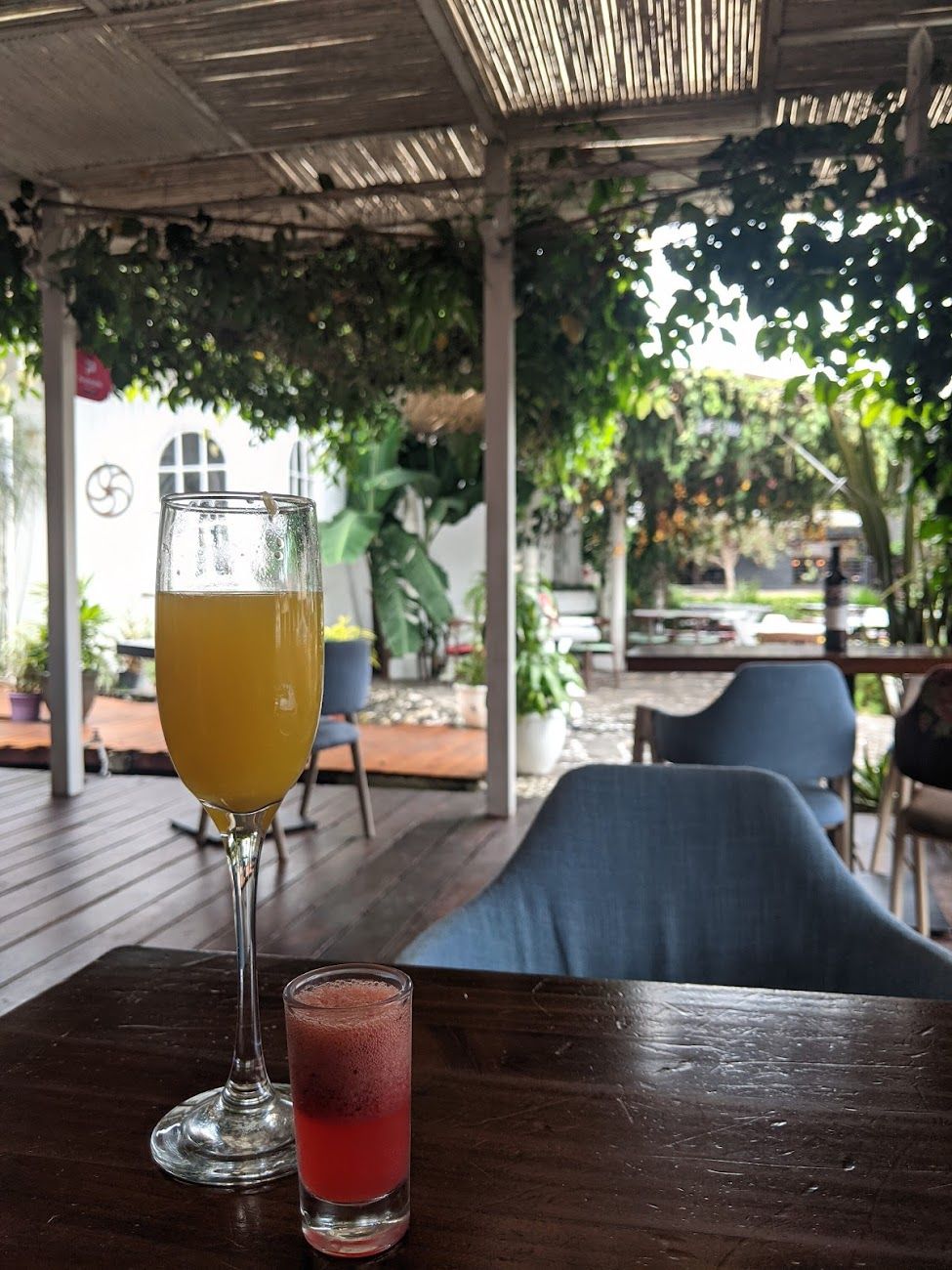 Drinks at Saul’s Bistro Drinks at Saul’s Bistro |
COVID-19 in Costa Rica
In general, we did not have many problems entering the country. The country’s GDP is heavily reliant on tourism, meaning tourists actually have more freedom than locals in some sense. Whilst no COVID test was required for entry, mandatory health insurance determined the length of your stay (max 90 days). Local vehicles were restricted to drive only on certain days based on their number plate, but rental cars and tourist buses were exempt. The biggest effect we felt was from the nightly restrictions: all restaurants and stores had to close at 21:00. It was not the end of the world but it meant that we could not enjoy different places fully. Masks were mandatory at all times.
Puerto Viejo
This particular town is one of the hotspots on the country’s Carribean coast. As a typical beach town with shops and restaurants connected by dirt roads, we came here with two goals: lie on the beach and drink piña coladas.
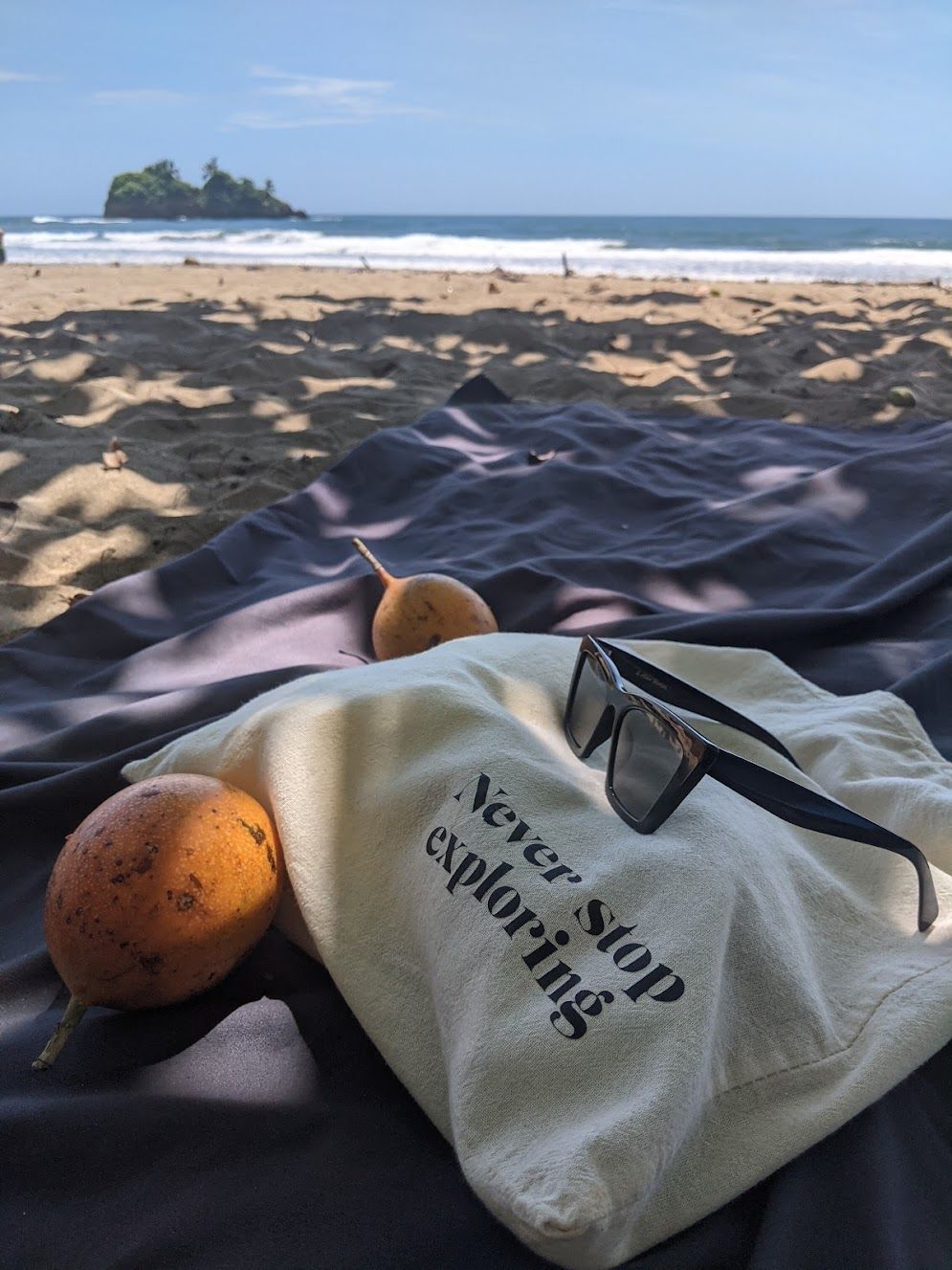 Cliché Instagram shot, check. Cliché Instagram shot, check. |
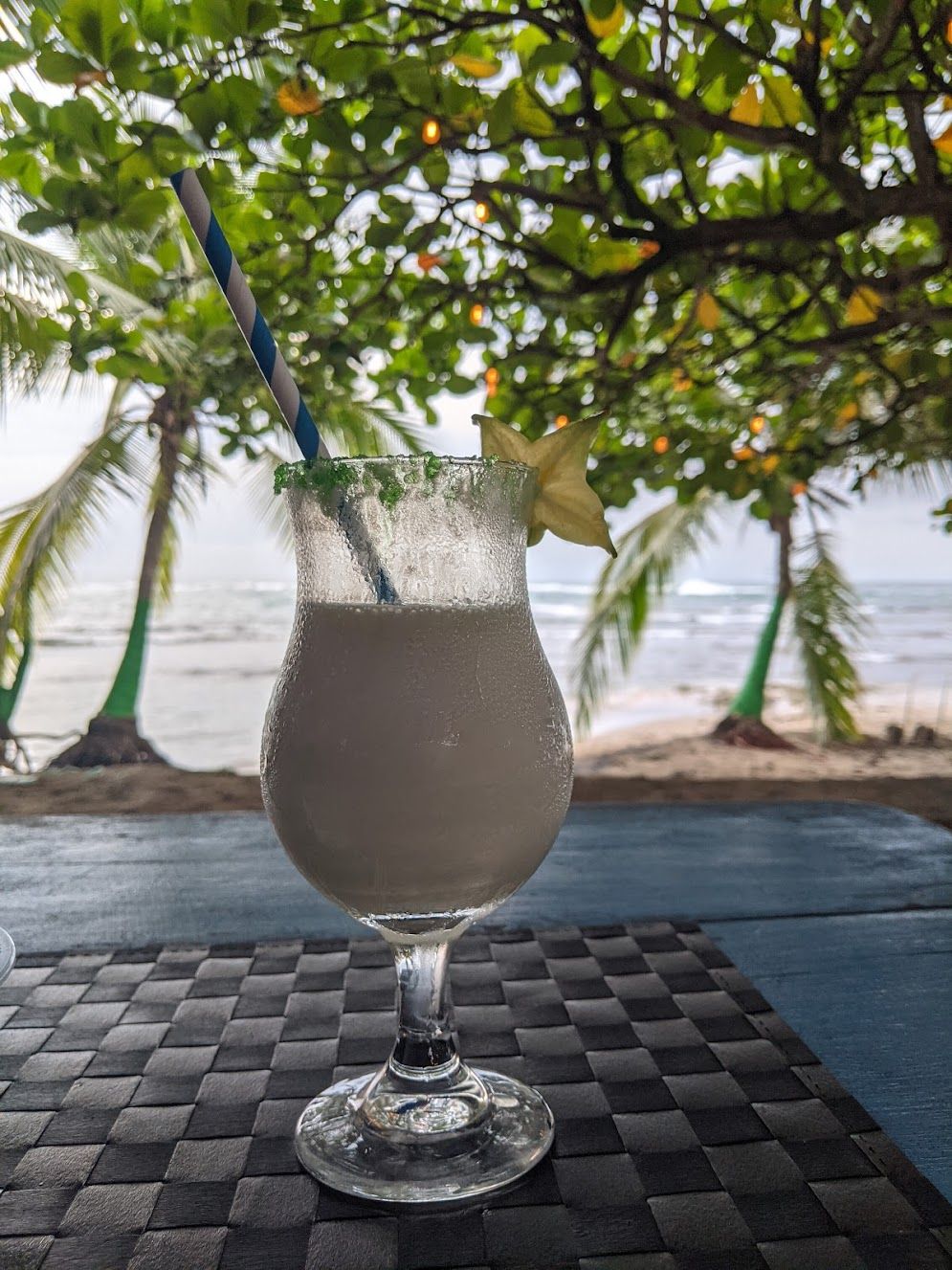 A typical cocktail here cost around ₡3500 (£4) A typical cocktail here cost around ₡3500 (£4) |
Despite the obvious party vibe – do expect to be offered drugs every time you’re walking around, or even having dinner! – the town still manages to remain somewhat charismatic.
The town itself is quite small but it offers enough in terms of restaurants for the 4 or 5 days that we were there. You’re likely to find a few more fish dishes here, alongside Costa Rica’s staple foods, rice and beans. Plenty of shops too, though the clothing prices made my eyes water!
I do recommend you either walk or hire a bicycle to Playa Cocles. This beach is much larger and the atmosphere is much calmer. You’ll find a few bars and restaurants along the road there too.
Cahuita
Puerto Viejo doesn’t offer much beyond its beaches, so we did a day trip to Cahuita National Park. We took the bus there, for about ₡2000 each. The park entrance is a 10 minute walk from the bus terminal. Entrance to the park is free but you are encouraged to pay a donation.
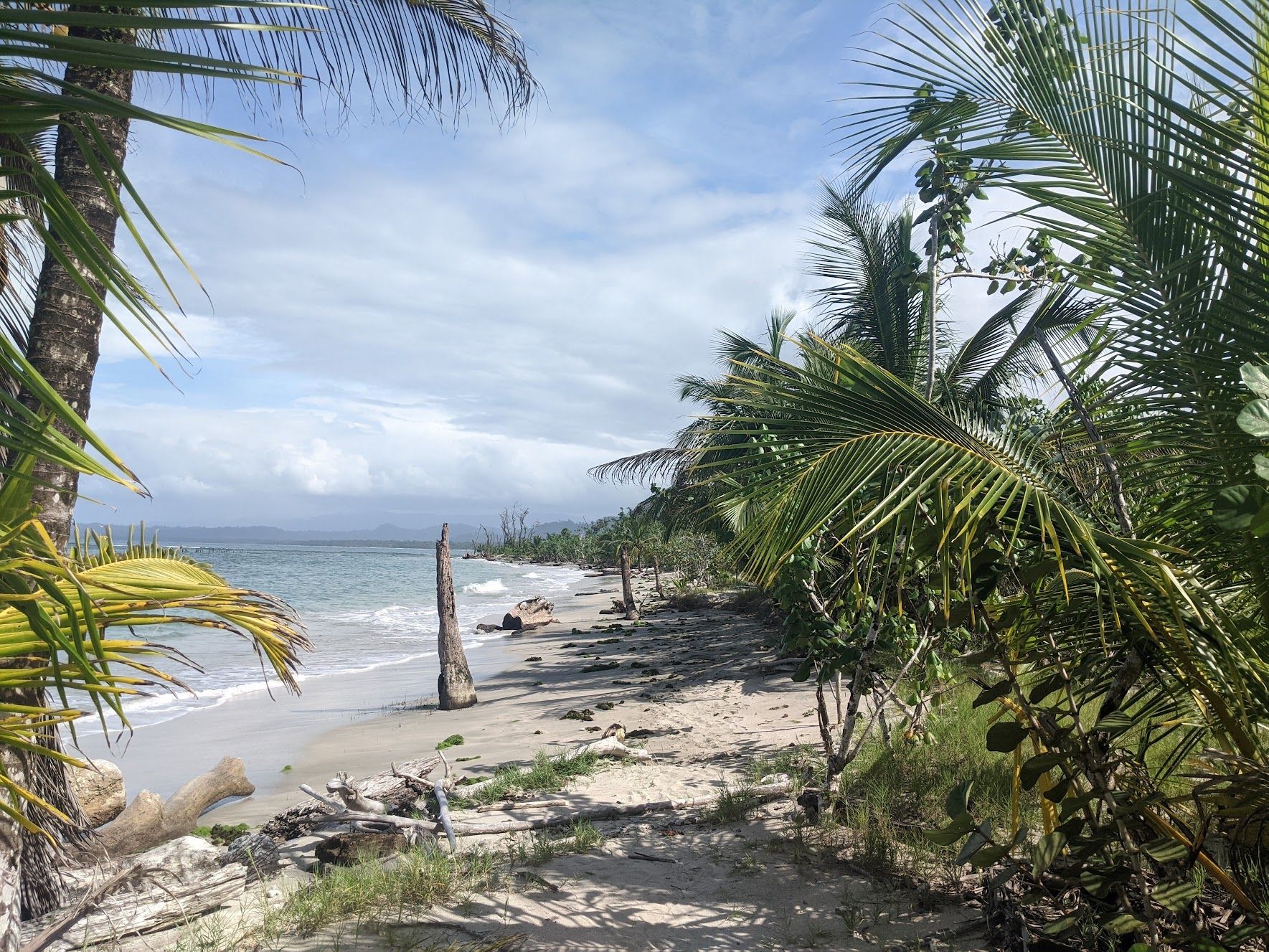 Despite its small size, Cahuita National Park has a range of spectacular terrains and views
Despite its small size, Cahuita National Park has a range of spectacular terrains and views
If you head here on a whim, like we did, you’ll probably be arriving without a tour guide. Outside the park entrance you’ll most likely be met by a friendly local who will offer you guide services. A couple of things to note: this type of guide will not be official (i.e.: they probably haven’t gone through all the certifications required to be officially recognised as a guide in CR) and they may not have equipment with them. Nonetheless, we decided to hire one of these locals, after haggling and reducing the price significantly. If my memory serves me right, they initially wanted ₡50,000; we paid around ₡20,000 plus tips at the end.
We were met by a different man than the one who took our money: a frail yet jovial old man, with a large branch for a walking stick and the unmistakable smell of booze draped around him. He introduced himself as Ronald and he apologised, for he said he had one too many glasses of rum the night before. He explained that he has been a guide for over 30 years, that he grew up in the jungle.
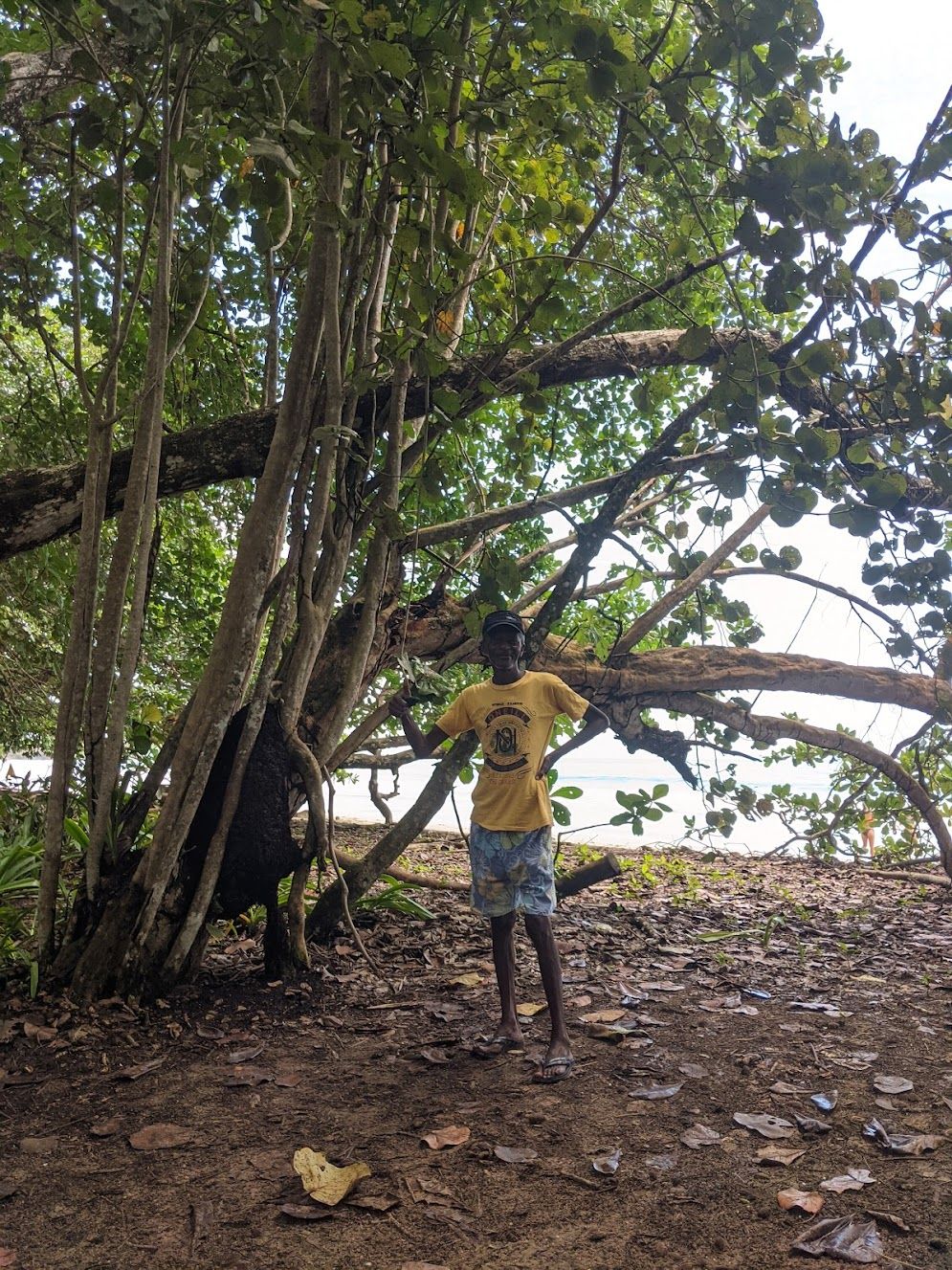 Ronald, at the end of the guided walk
Ronald, at the end of the guided walk
Ronald was very polite and eager to share his knowledge; he kept insisting we ask him questions! He told us a lot about the endemic fauna and flora, making a particular point about Costa Rica’s rich supply of medicinal plants. Some of his claims about these plants sounded dubious but as a sign of respect we simply nodded along.
We were surprised that within two steps of walking into the park, Ronald told us to stop and look: he had spotted a lizard. Nearby he spotted a turtle. He said that normally there is also a crocodile that lounges around but he was nowhere to be found today.
It is important to note that seeing wildlife in these parks is not guaranteed. That is the nature of… well, nature. Other than the limitless leaf-cutter ants marching alongside us and a sleepy sloth, we didn’t notice much more in terms of wildlife along the guided part of the tour. You see, Ronald only walked with us for 1-2km – the entire trail is around 8km – we said our goodbyes, paid him a tip and carried on by ourselves.
I do recommend you get a guide, official or not, because they will the spot the wildlife. They know where and what to look for.
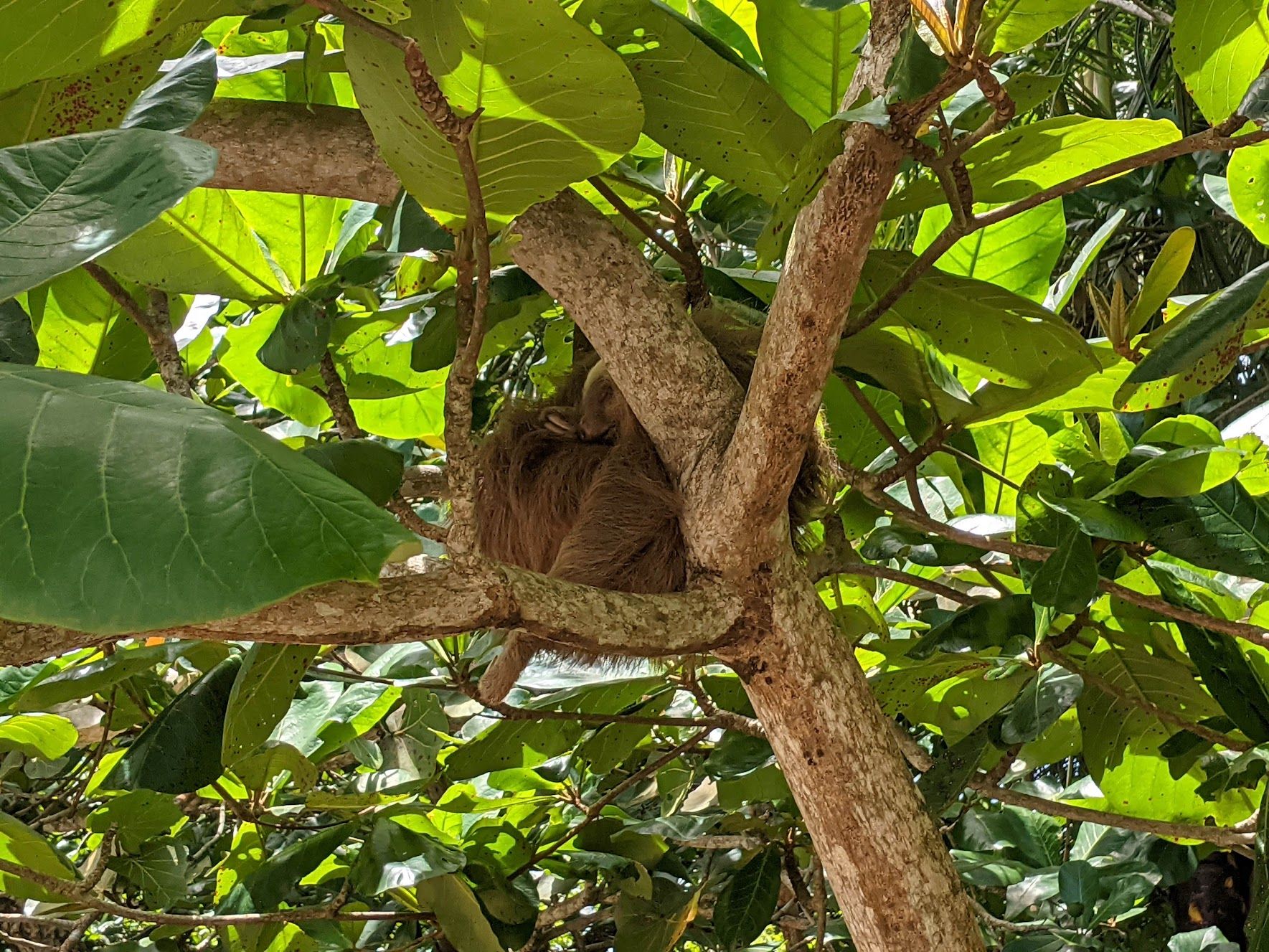 A sleepy two-toed sloth
A sleepy two-toed sloth
The 8km trail will take you through a variety of landscapes. You can take a break at a secluded beach that feels all yours, then head through into the deep jungle where you might get lucky and see some snakes. The trail does have large sections with no tree canopy, so it’s recommended you bring some water. We heard from other tourists that park officials may require you to dispose of plastic bottles before entering, so if possible bring a reusable bottle to limit the chances of confiscation.
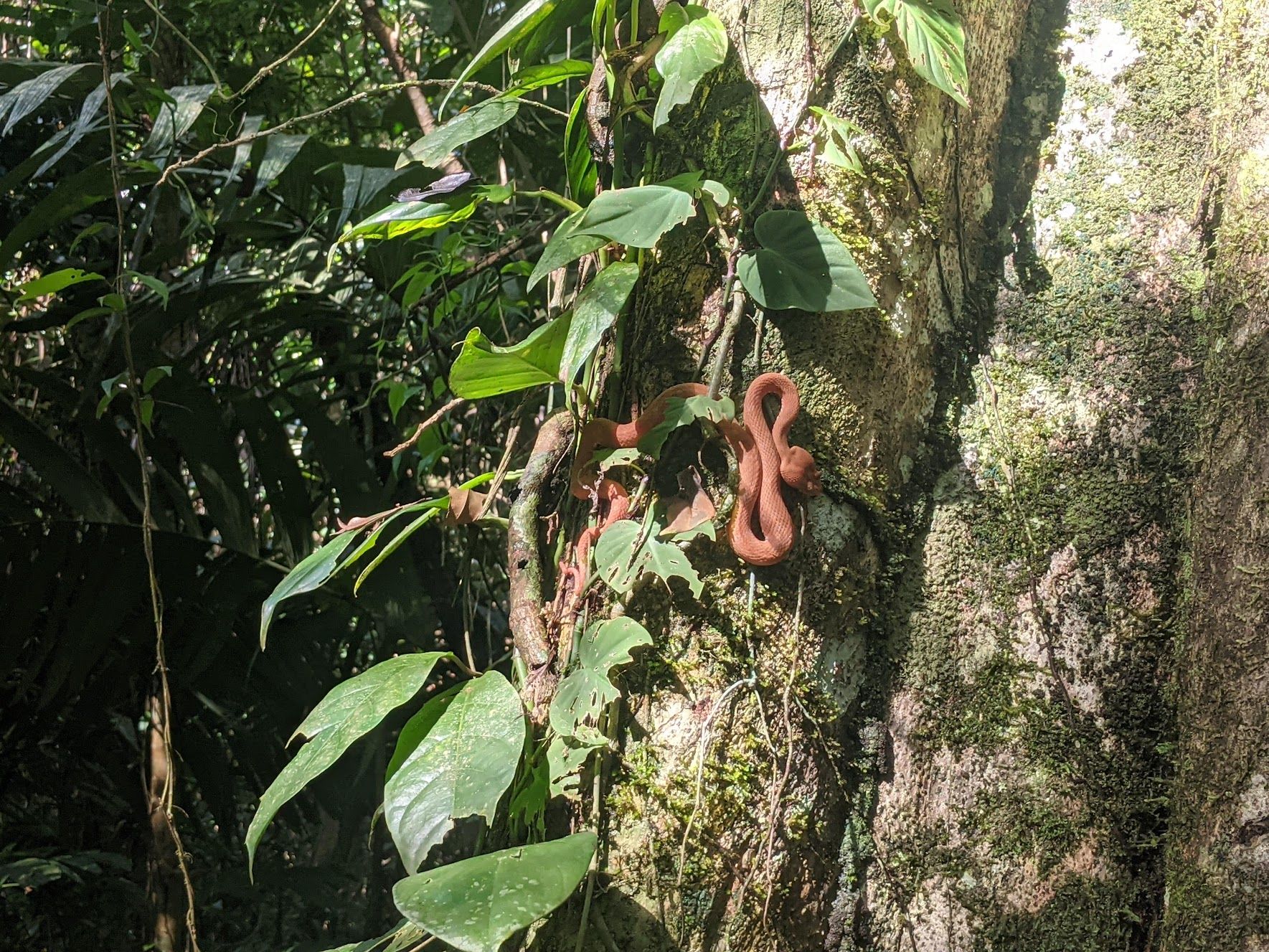 |
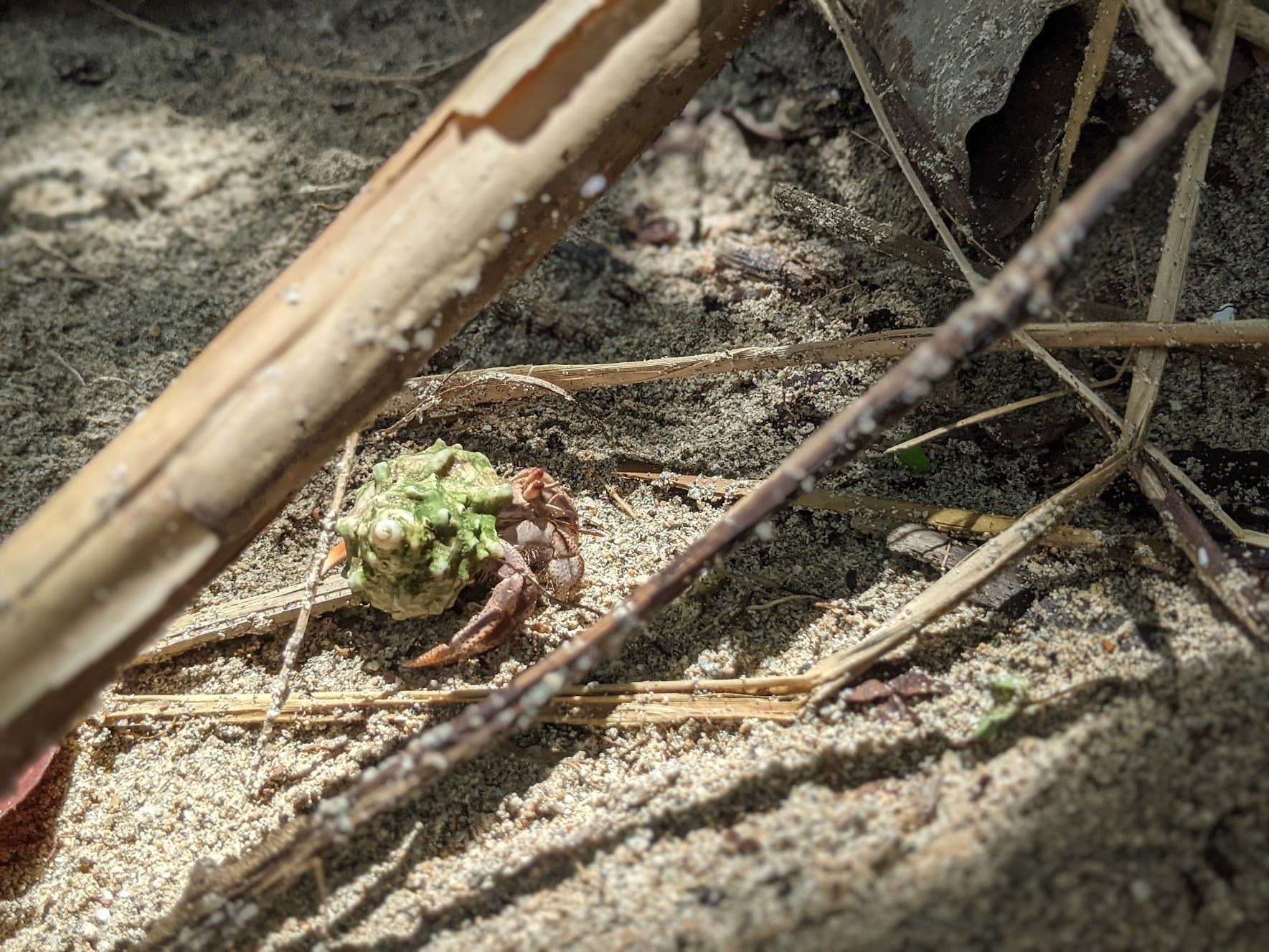 |
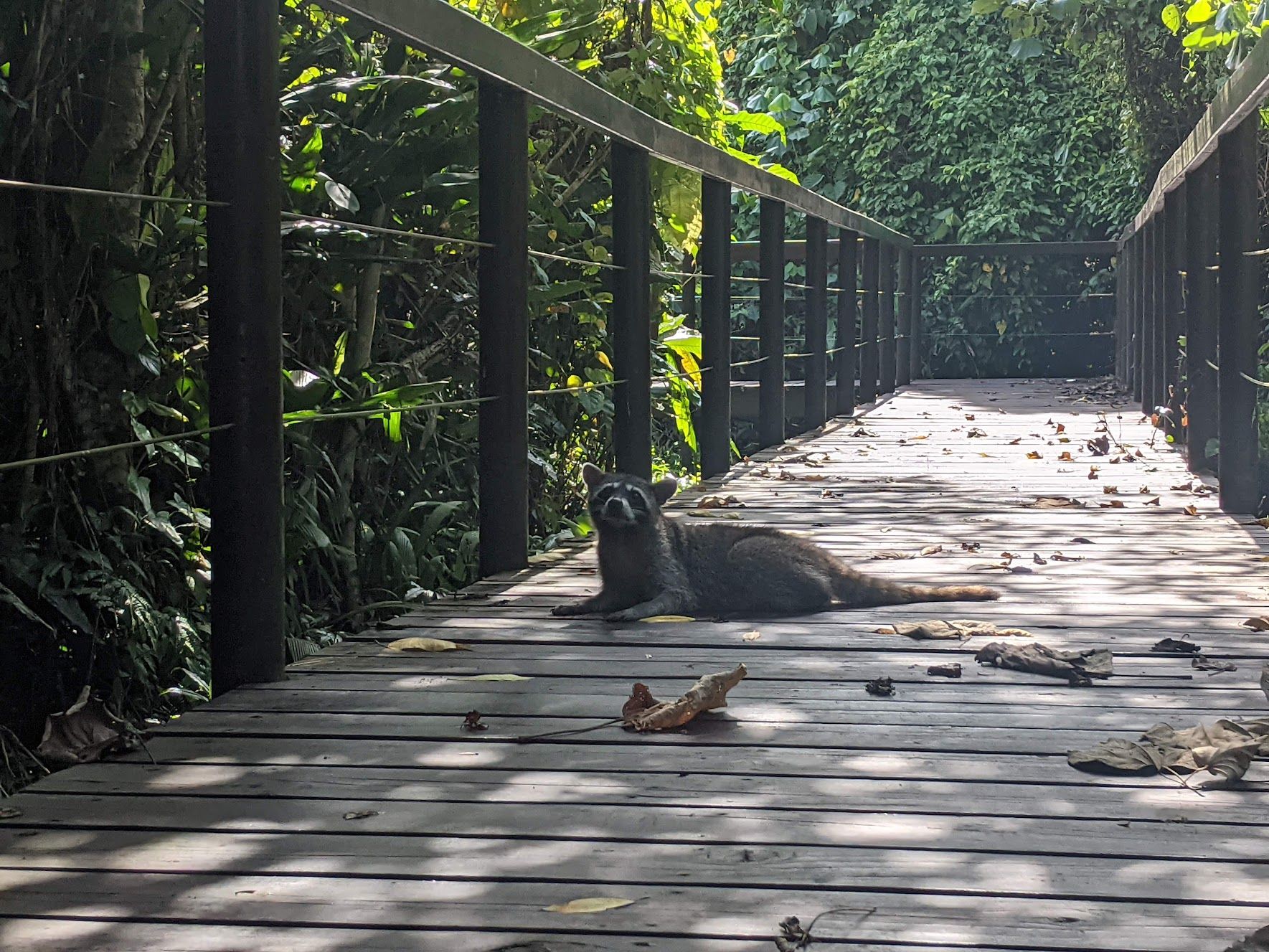 |
 |
Cahuita National Park was an early highlight in our trip; I thoroughly recommend you go there if you are already in Puerto Viejo.
One final note: the exit is right next to the bus stop. Busses come once every 1 hour and they are likely to be packed, which means they won’t stop to pick you up. That happened to us and the other couple of tourists there, so we ended up calling a local taxi to come and pick us up.
Manzanillo
Another local delight is the small town of Manzanillo, south of Puerto Viejo.
The journey there is worth doing by itself. A 1 hour bicycle ride will take you along a smooth paved road that undulates through the otherwise untamed jungle. As the sun’s rays pierce the canopy, they also bring to attention the thousands of gigantic spider webs spluttered across the telephone wires. Howler monkeys can be heard wailing in the distance and if you’re lucky you might see toucans fly between the trees.
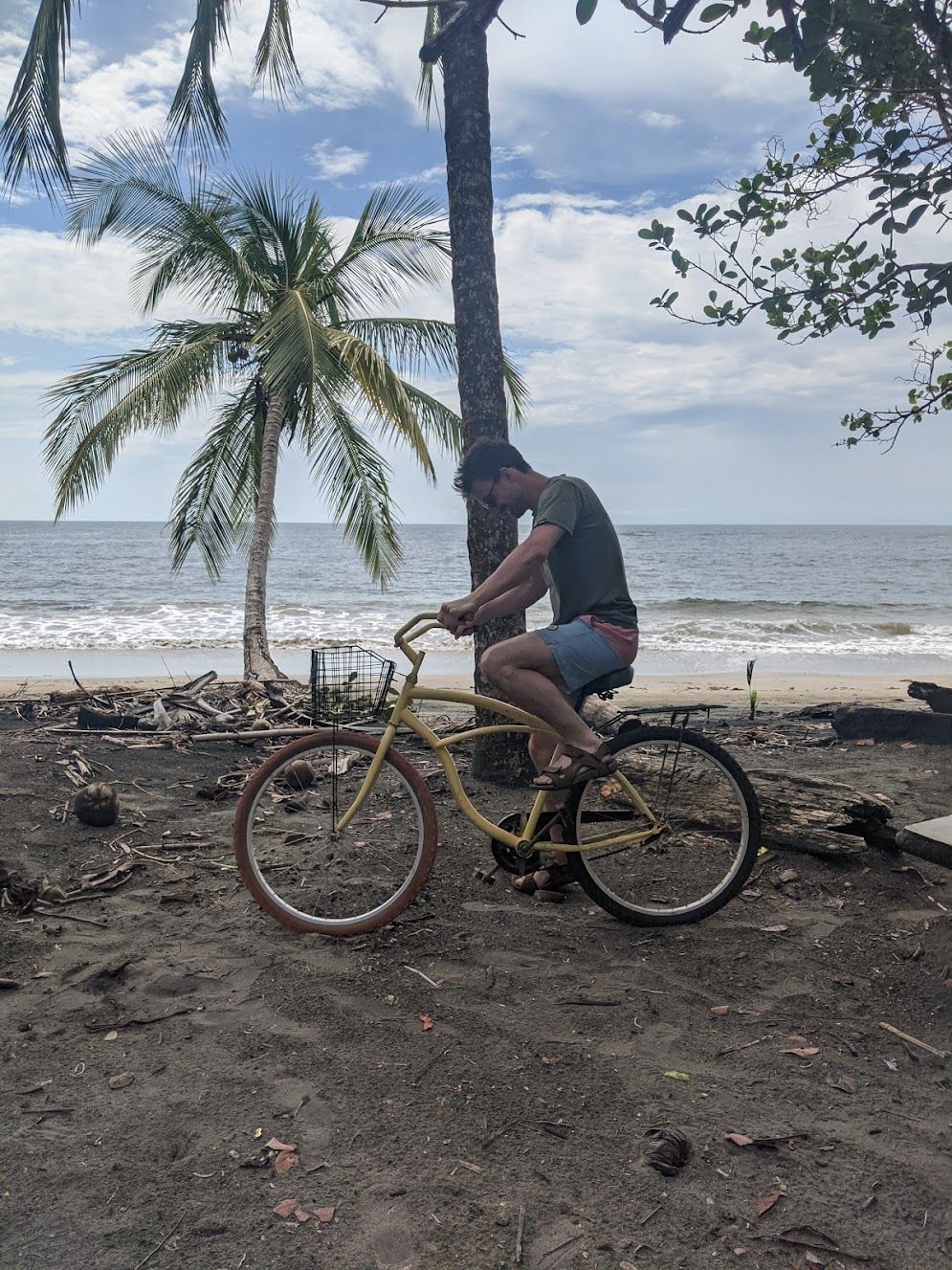 You can hire a squeaky retro bike like this one for about $7
You can hire a squeaky retro bike like this one for about $7
The town itself felt very quiet, with most shops and restaurants closed. There is a national park nearby, Refugio Nacional de Vida Silvestre Gandoca, but we were told that due to a recent storm the paths were extremely muddy and hiking was ill-advised.
La Fortuna

After soaking in the sun and sea for a good few days, we rented a car and headed towards the northern central valley.
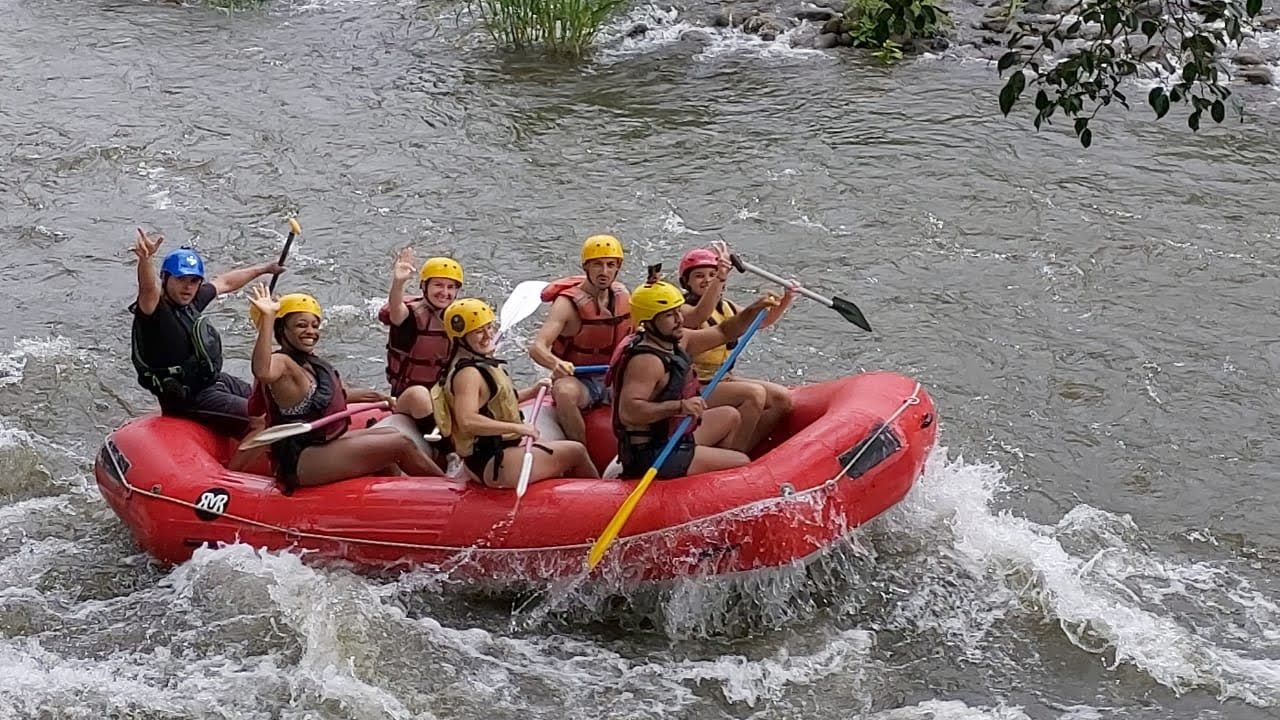 Water-rafting in the Balsa River. Just one of the many things you can do in this area
Water-rafting in the Balsa River. Just one of the many things you can do in this area
We arrived at our Airbnb, 5 minutes from the cente, after a ~5 hour drive from Puerto Viejo (which was mostly spent behind series of long lorries). It’s not a large city, but in comparison to Puerto Viejo it could be considered big. The town center is surprsingly colourful and bustling, with a nicely maintained park nestled in the middle of the town’s grid system. Around the park you will find a plethora of restaurants, bakeries, sodas (small local cafeterias/restaurants) and tour centers.
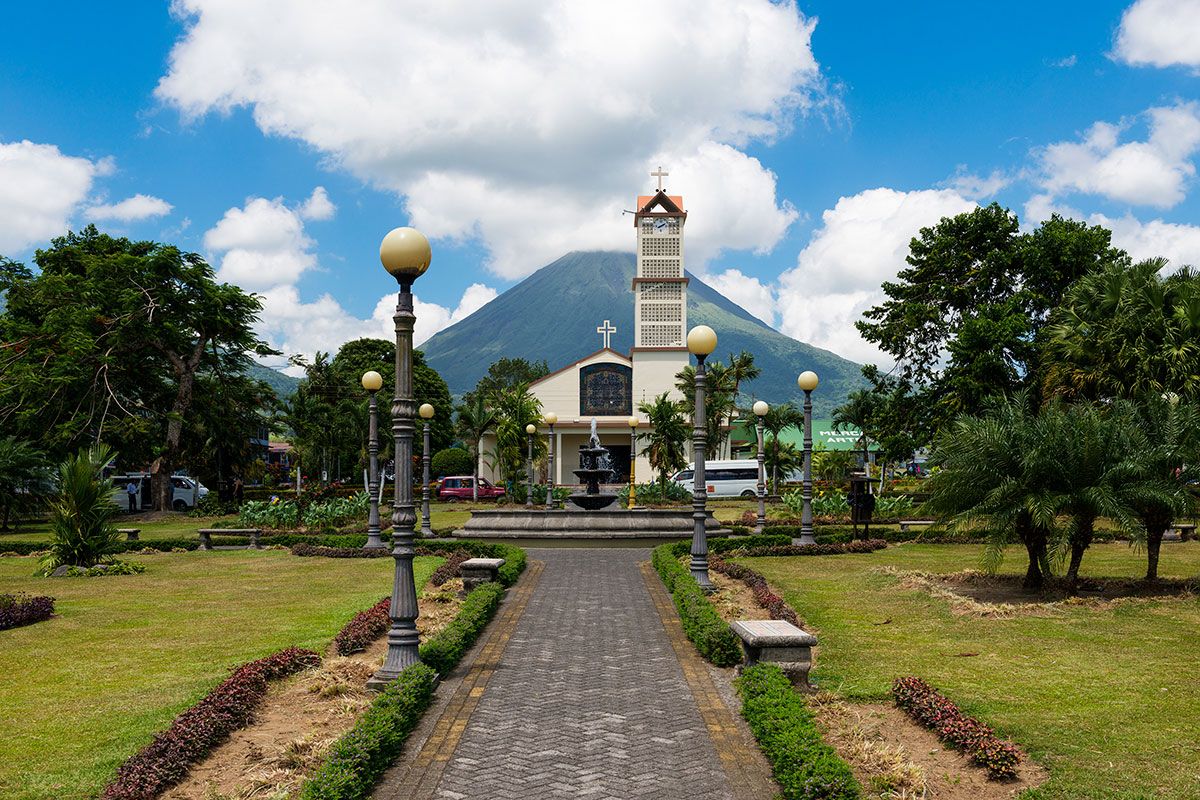 The town center. Credit: arenal.net
The town center. Credit: arenal.net
We had decided to rent a car for this part of the journey because the attractions were somewhat spread out. In retrospect, you could probably get away without one, but you’d have to organise transport to the national parks and whatnot via tour agencies, which also comes at a cost of course.
Night Walk
There is so much to do in La Fortuna: let’s kick things off with a night walk in the jungle! As mentioned before, the town center is full of tour agencies all selling the same thing. We shopped around for the best price; outside Mercado de Artesanías, a large souvenir market, we found a man tending a small stall. He introduced himself as Sergio. We chatted for over 10 minutes; he was a very sweet, passionate man, who absolutely loved his community and the nature around it. Don’t be fooled by this modest description of him – he has been a guide for many years and has even done work with the BBC – or so he tells us! In any case, we fell in love with his charisma and decided to do the night walk with him.
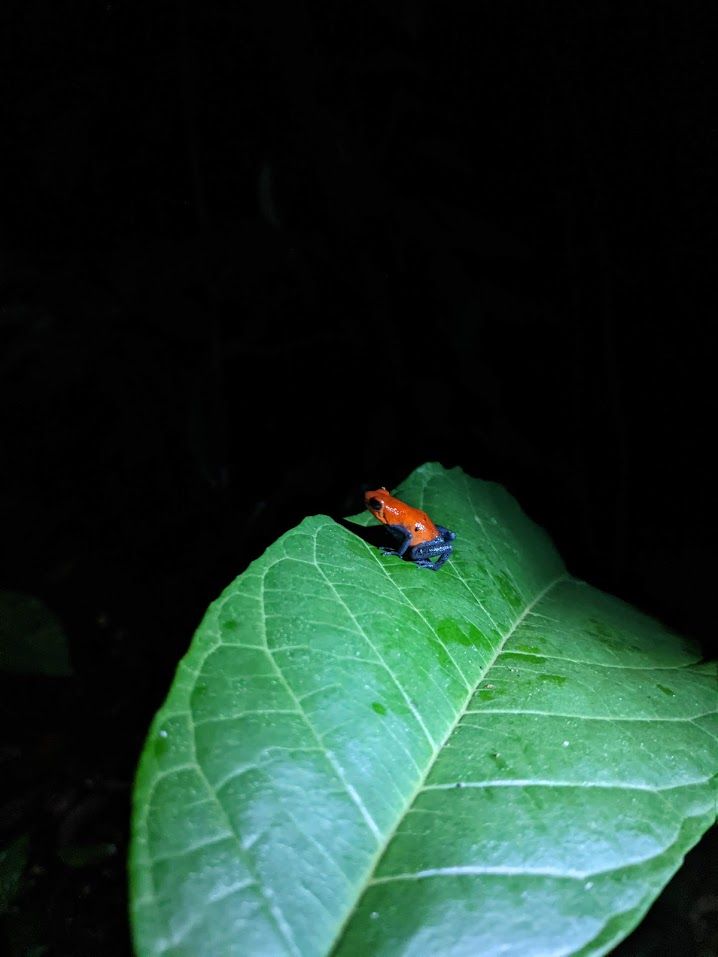 A poison dart frog that Sergio carefully caught and placed on leaf for us
A poison dart frog that Sergio carefully caught and placed on leaf for us
The advertised duration of the walk was around 2 hours – lost in his passion, Sergio took us around the entire reserve, which took almost 4 hours! – not that anyone is counting, but in total we saw about 9 sloths, various bugs, a racoon, a kinkajou, some common lizards and of course posion dart frogs.
I cannot stress the passion and knowledge that Sergio had for his surroundings. He was full of wild stories too. At one point he grabbed a millipede and demonstrated how they produce cyanide as a defense response, letting us get a whiff of the poisonous, yet aromatic gas!
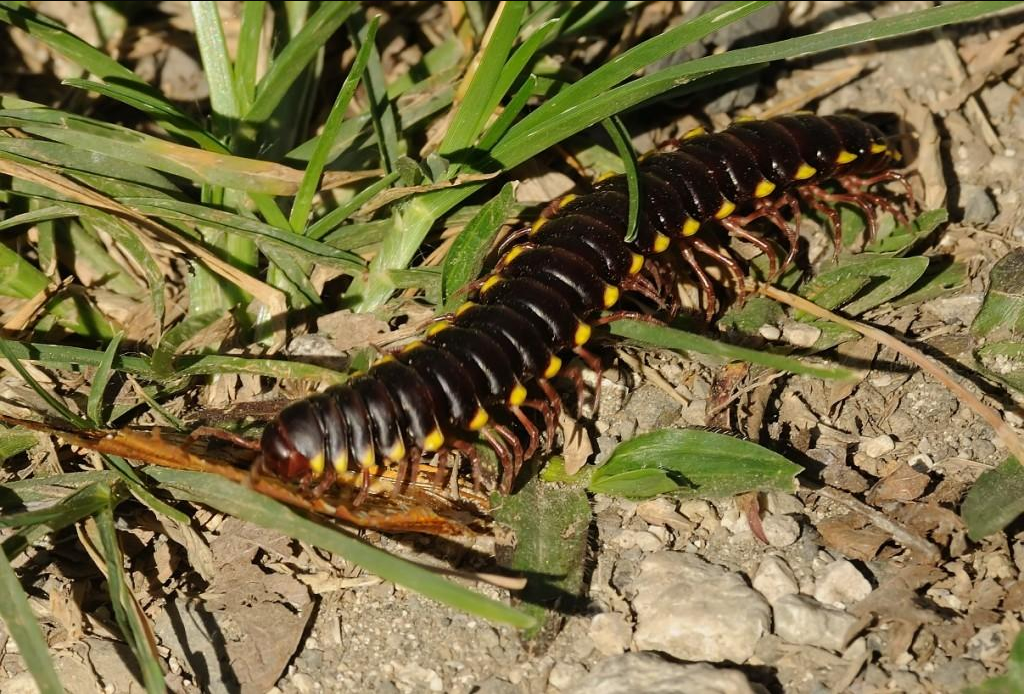 These guys are everywhere in Costa Rica. Photo credit: https://www.flickr.com/photos/dragonflyhunter/7123973401
These guys are everywhere in Costa Rica. Photo credit: https://www.flickr.com/photos/dragonflyhunter/7123973401
If you ever find yourself here, find Sergio and tell him Petar and Jess sent you! ❤️
Hot Springs
Heading north-west of the town along the main road you will find dozens of hot spring resorts, all varying in price and luxury. Fortunately you can also find free access to the very same hot river that the private resorts are built around. We were told where to go by our Airbnb host; we parked at the side of the road where we had to pay a small fee of ₡2000. We headed down a small path that leads you under the bridge ahead. When we reached the river we thought we were at the wrong place, since the underpass you have to traverse didn’t inspire us imagery of relaxing hot springs!
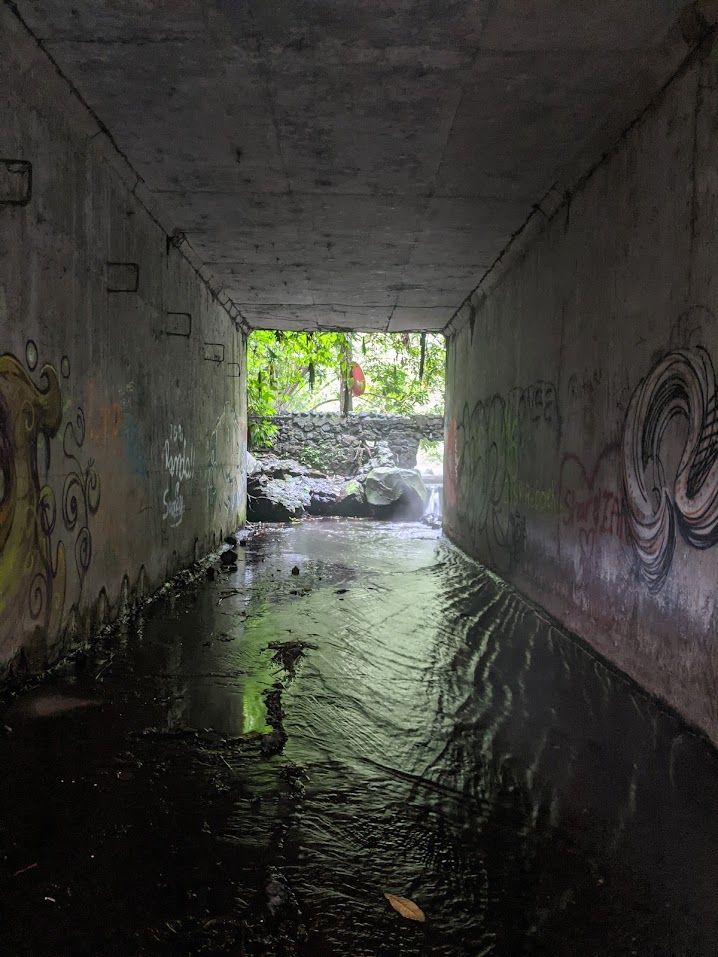 Beyond this tunnel lies paradise, trust me.
Beyond this tunnel lies paradise, trust me.
Through the underpass we could see a stone wall on the other end, with warm steam rising through the lush greenery. We hopped over the stone wall and discovered the river opening up and a couple of early birds already soaking in the natural pools.
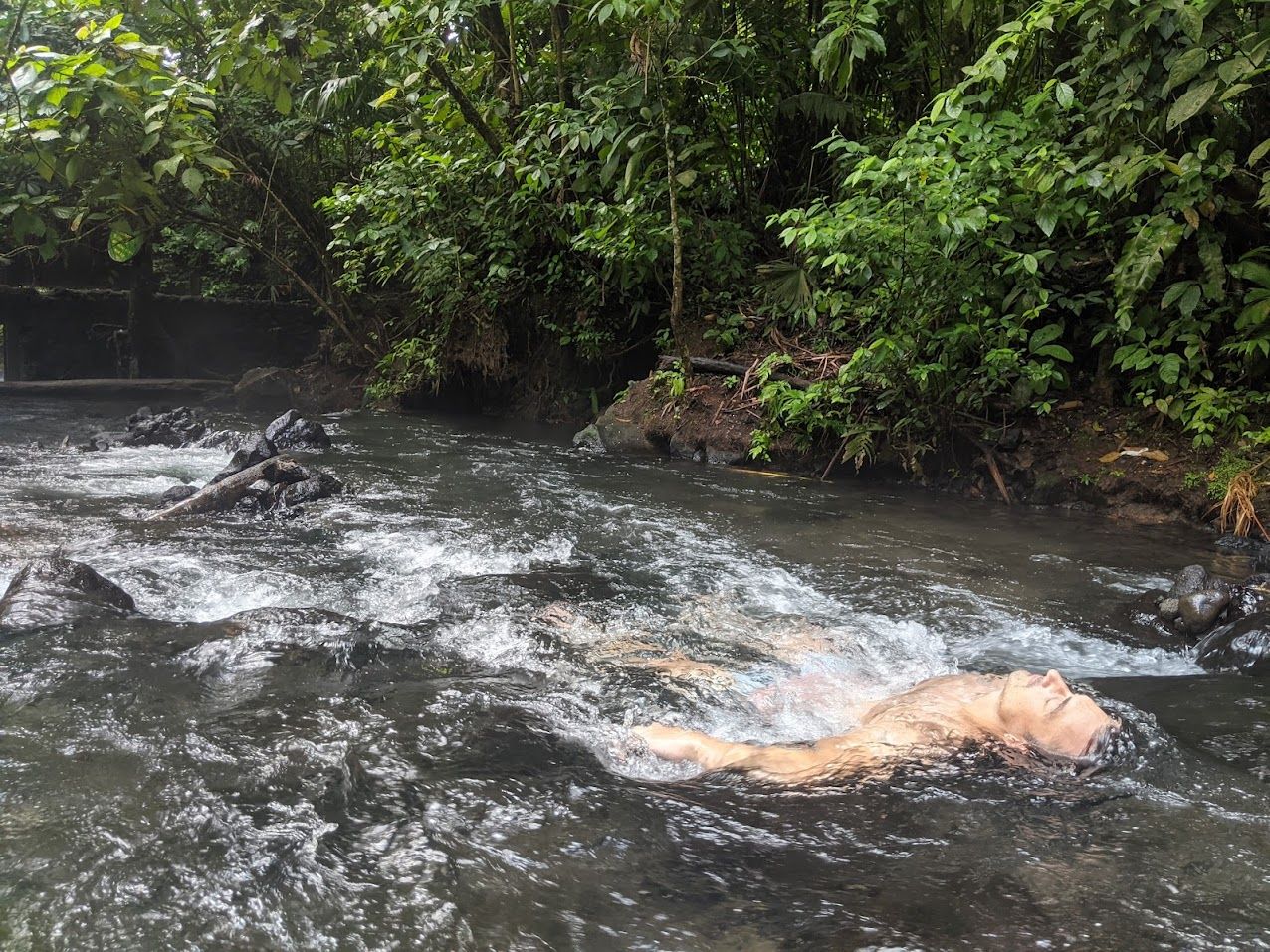 Find a nice spot to nestle in; the current is actually quite strong!
Find a nice spot to nestle in; the current is actually quite strong!
As the day went on, more and more locals and tourists began gathering for a chance to soak in the blissful stream, some even bringing half a fridge’s worth of food and drink with them. I highly recommend you come here, and even if the rain starts pouring down, you won’t mind it one single bit…
Luxury Spa Resorts
As mentioned earlier, the area is full of high-end spa resorts. Enticed by the possibility of a moderately affordable spa break (we hadn’t learned that Costa Rica is very expensive yet), we looked at staying one or two nights at the Baldi Hot Springs Resort. Much to our disappointment (but to the delight of our wallets), even a single night’s stay here was way too much given our budget. We did however decide to buy the day-pass which gave us access to all the spa facilities and came with lunch included.
As the night grew, thunderstorms brought torrential rain down on us. Surrounded by hot steamy water, one could say that there were worse spots to be stuck at during a rainstorm! All in all, it was fun and relaxing day, and for about $60 it’s not the worst deal in the world.
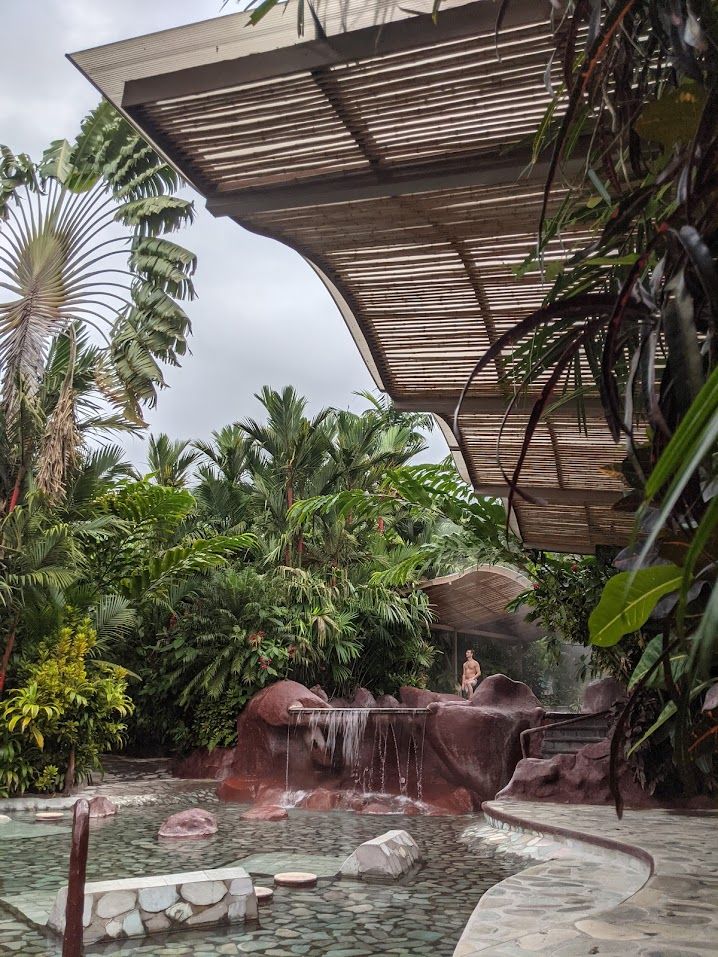 One of the many pools scattered throughout the large resort One of the many pools scattered throughout the large resort |
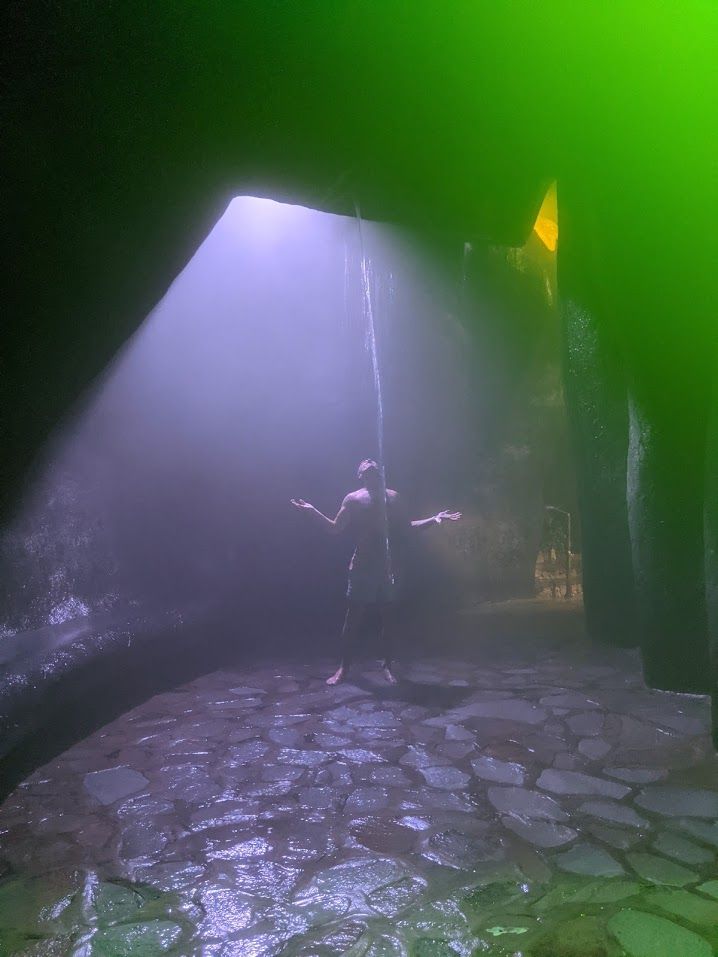 We had to get our money’s worth, so of course we stayed until the night We had to get our money’s worth, so of course we stayed until the night |
Vólcan Arenal
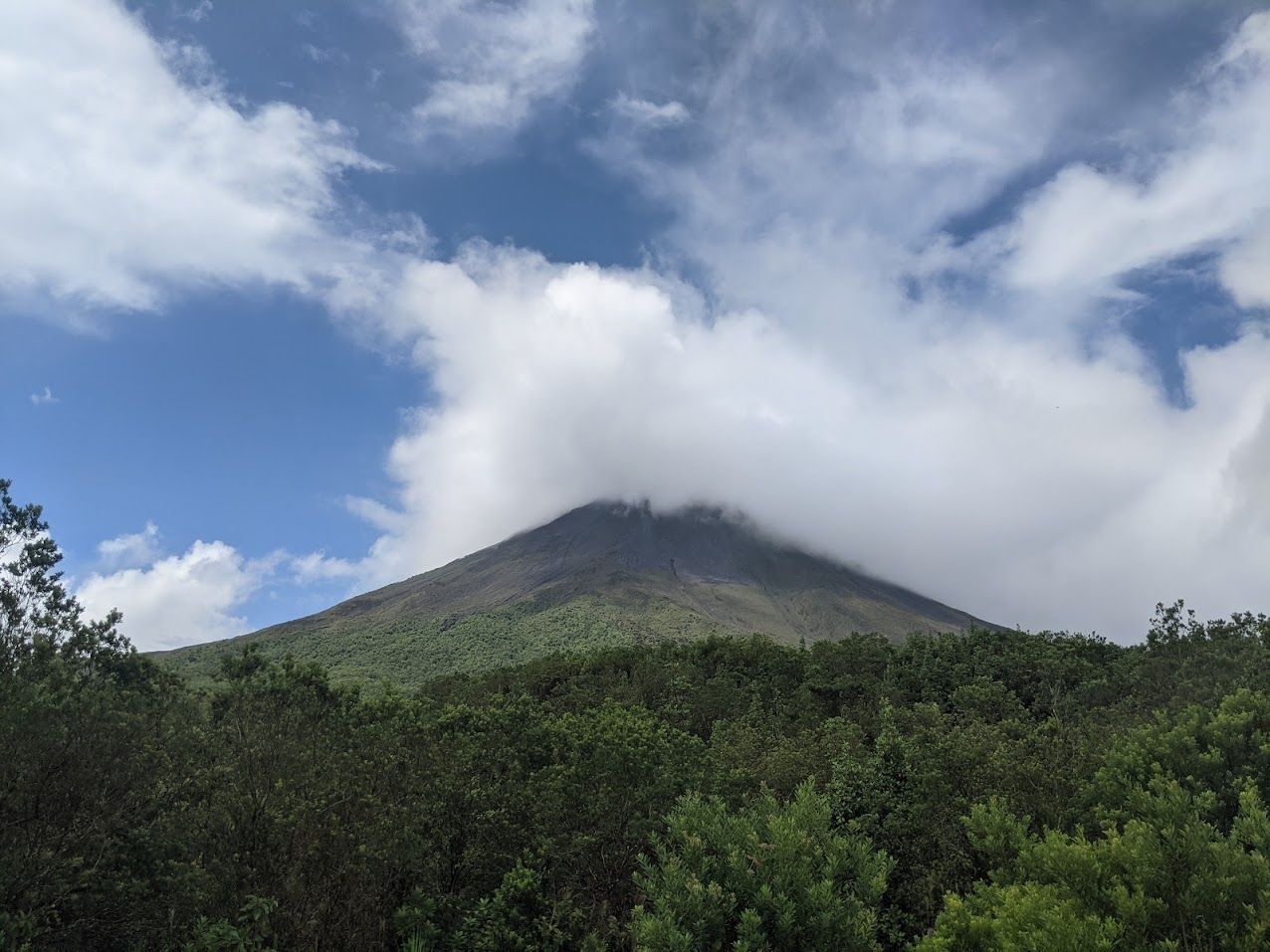
The perfectly shaped cone is an unmissable sight in the skyline; for most of the time we were in La Fortuna it was unfortunately obscured by cloud near the rim. Driving west of the town will take you to the national park which contains a number of trails. We first drove to the Peninsula Sector. We bought our tickets there for about $15 each. The short, paved walk will take you to the edge of the peninsula jutting out into the lake, proving a… cloudy view of the volcano.
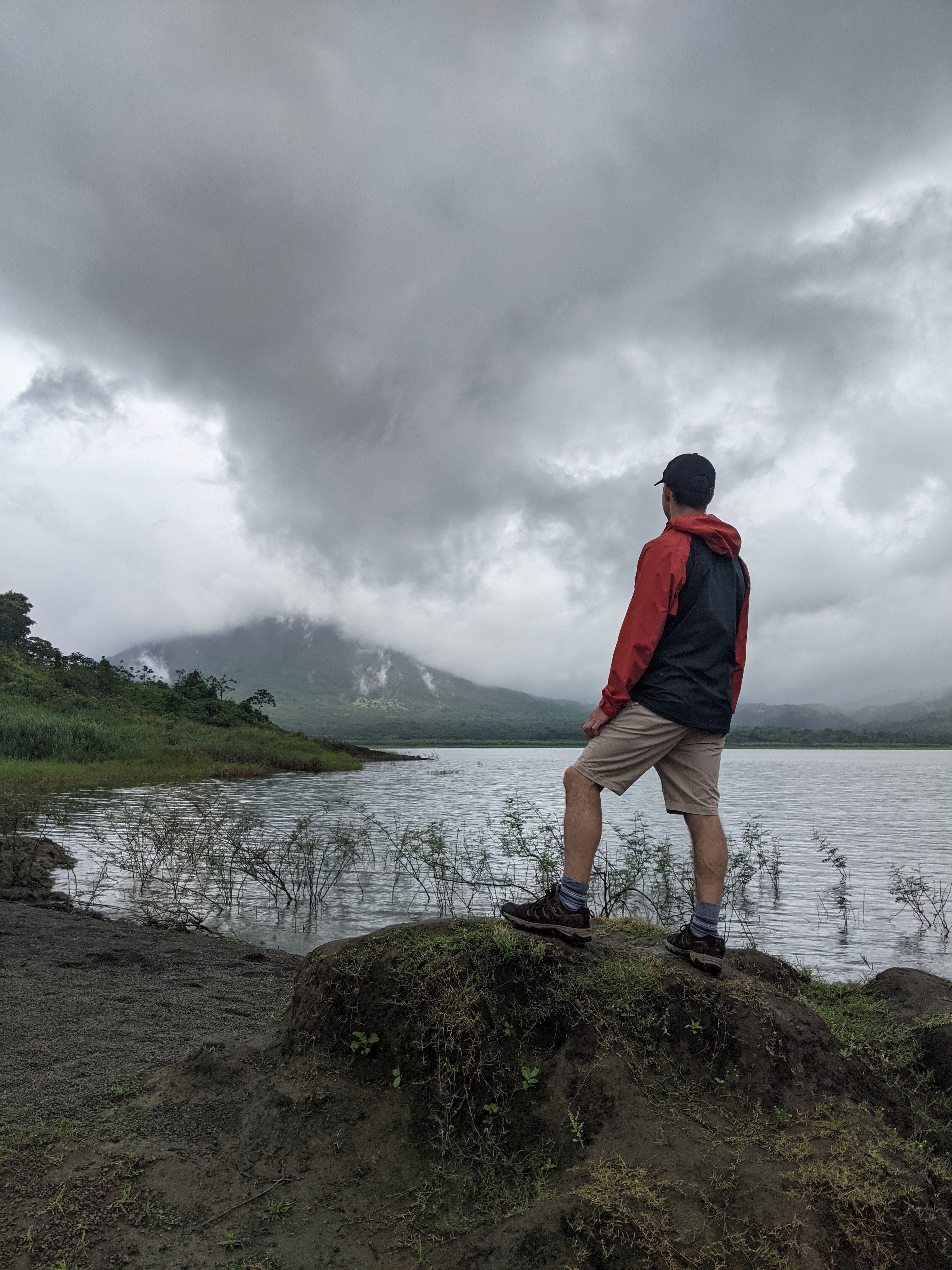 Behind all that cloud lies the volcano Behind all that cloud lies the volcano |
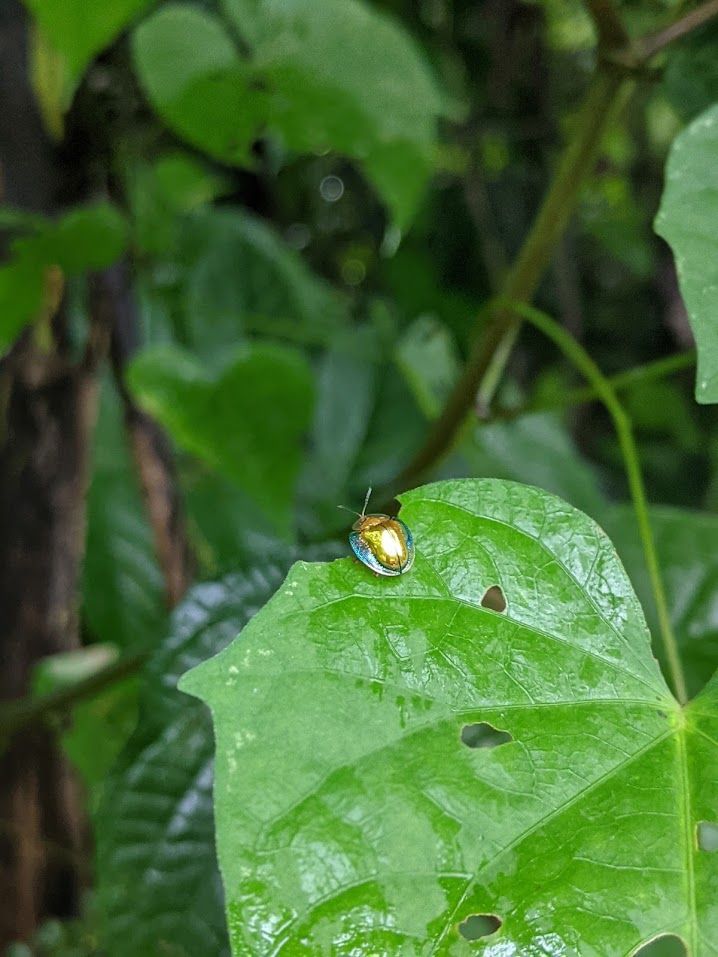 A golden tortoise beetle (genus Microctenochira) found along the walk A golden tortoise beetle (genus Microctenochira) found along the walk |
We also saw a rather brave white-nosed coati and a lot of large birds, including a number of great currasow hiding amongst the bushes.
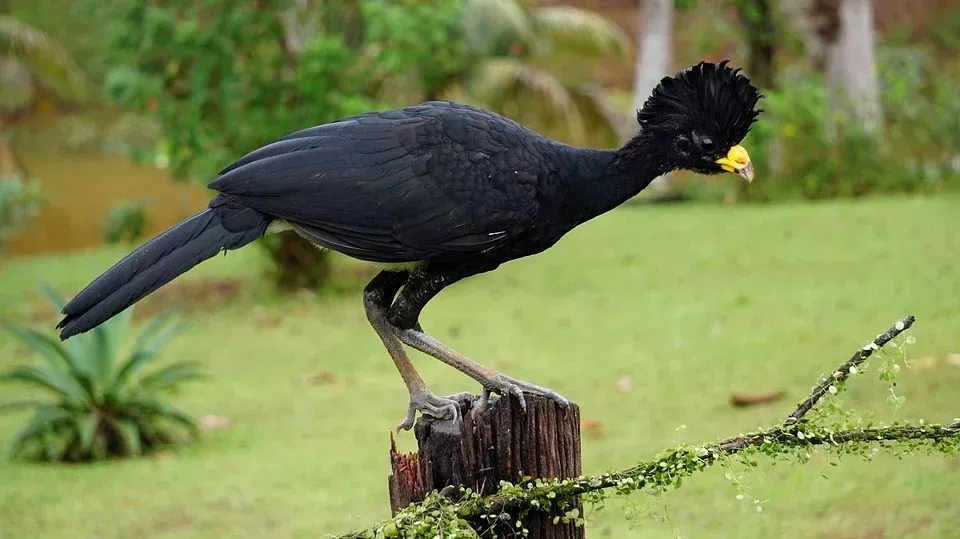 A Great Currasow: large and clumsy, but still quite majestic
A Great Currasow: large and clumsy, but still quite majestic
This walk wasn’t particularly long so we had plenty of time in the day to go and do another hike in the national park. We drove to the other visitor center; in total I belive there are 3 centers in close proximity to each other. We didn’t do the “1968 Lava Trail”, if that clears things up…
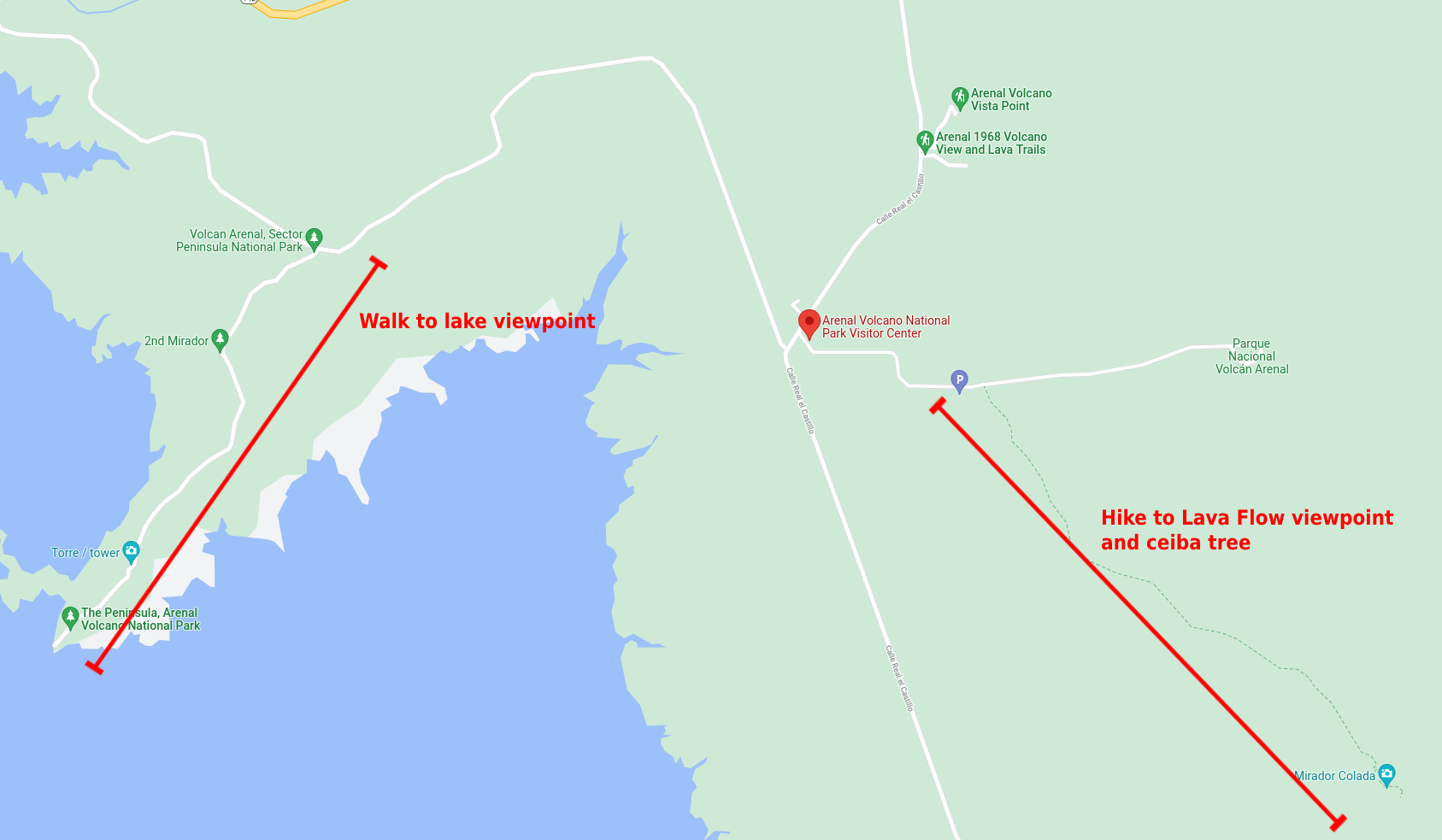 The entrances are a short drive from eachother. One ticket gets you into all of them.
The entrances are a short drive from eachother. One ticket gets you into all of them.
The hike to “Mirador Colada” is pretty easy, though it does take some time. The first part of the walk takes you through secondary forests: young trees and tall grass dominating the terrain. After sometime you enter the primary forest: untouched trees that have been growing for a very long time. We came across one of the most monumental trees I had ever seen (and I’ve seen Canada’s Gnarliest Tree!).
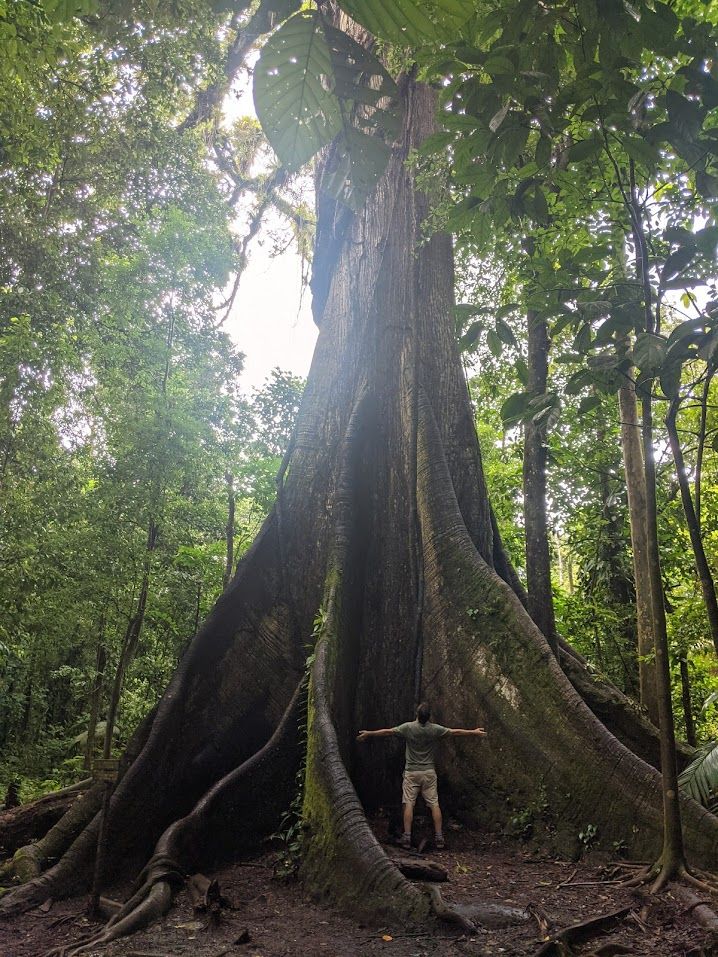 |
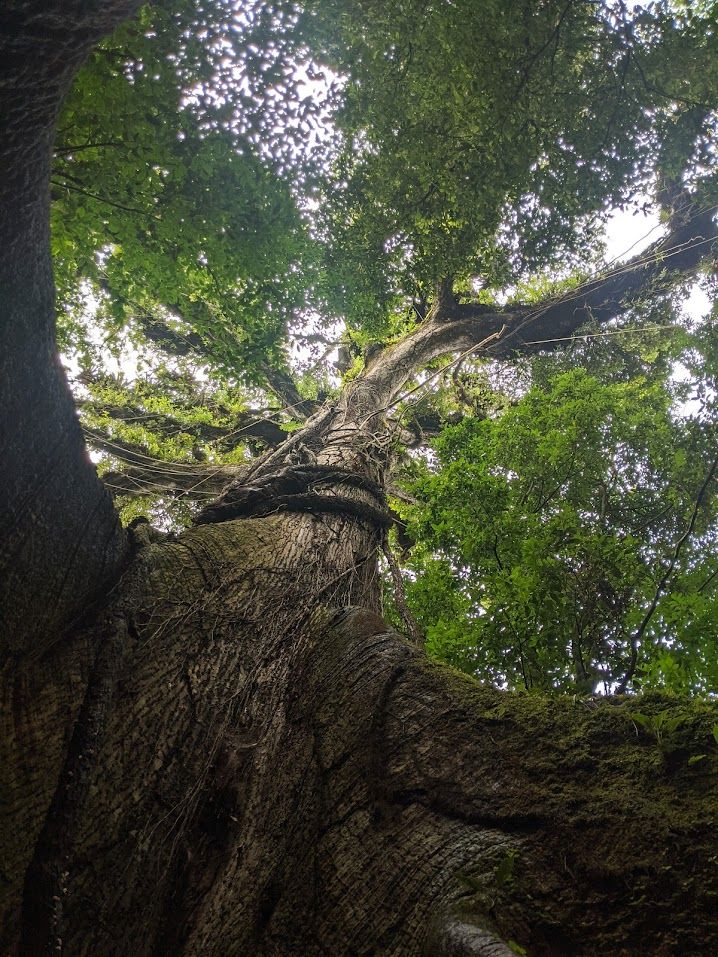 |
The images don’t quite capture the true scale of this imposing Ceiba giant. Its circumeferece alone was something to gawk at. The sign posted nearby states that the tree is 30m tall and is estimated to be around 400 years old. If the twisted roots and vines don’t add enough mystique to its character, we were later told by a guide in Monteverde that despite what the officials say about the age of the tree, it’s only ~50 years old! He claimed that the 1968 eruption wiped out most of the trees in the area and after the natural process of soil enrichment (volcanic ash, lava, etc.) the tree grew at an accelerated rate. I wasn’t able to find many sources about either estimate. Nonetheless, this was an awesome thing to see.
The end of the trail will lead you to a viewpoint near the base of the volcano, where you can see the igneous rock curled into knots from when it was still hot lava.
Rio Celeste
Not too far from La Fortuna is another wonderful site to explore, Rio Celeste. This river and waterfall are famous for their turqouise coloured water that almost appears to glow. I’d say this is a hike/walk you can do without a guide; it’s quite a busy trail so the chances of spotting wildlife are low.
Don’t be disappointed if the colour isn’t as impressive as the pictures in the brochures – when we went the waterfall was kind of murky – it changes depending on the weather and acidity levels of the two rivers that merge into Rio Celeste, under a process known as Mie Scattering.
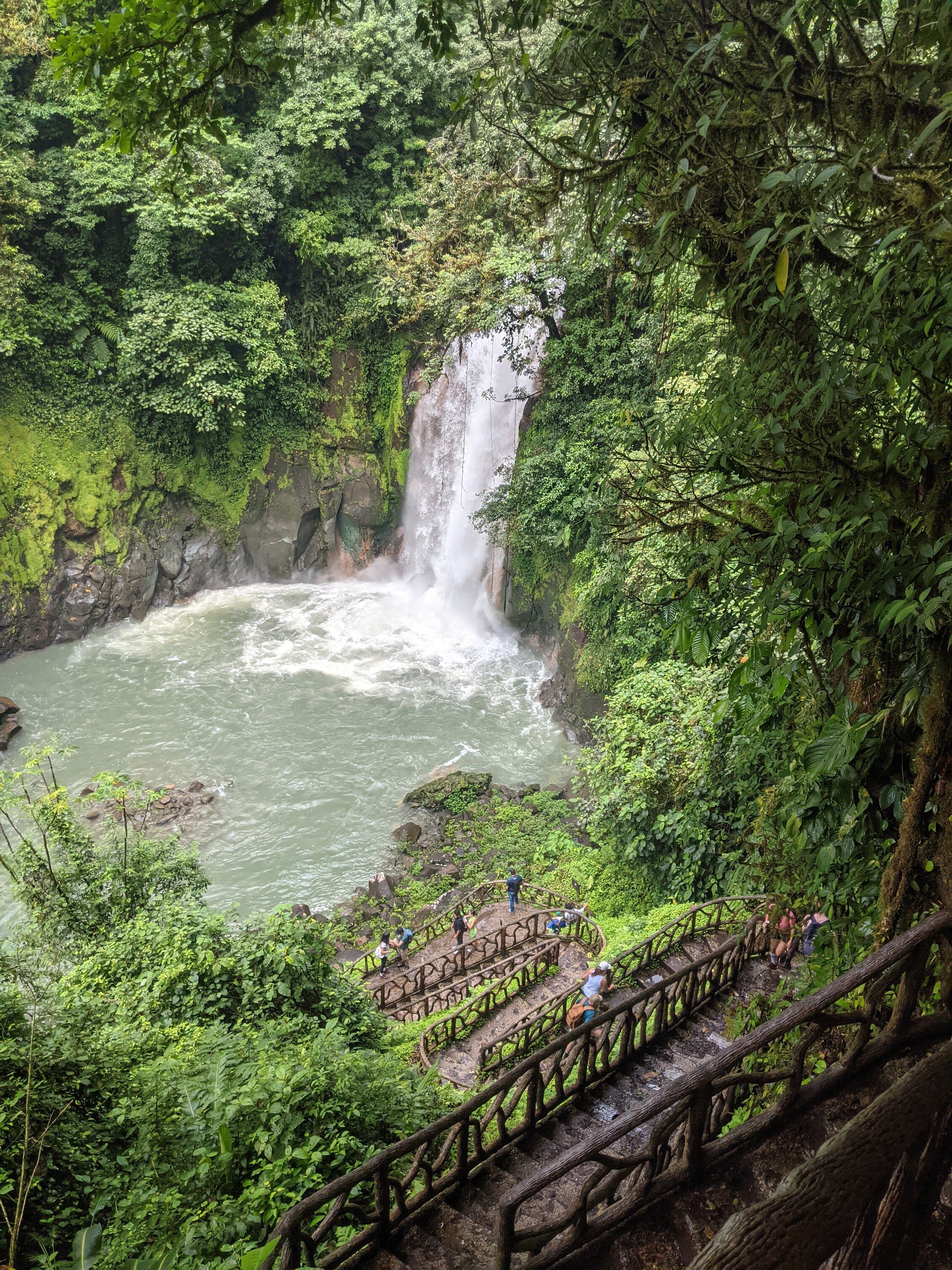 |
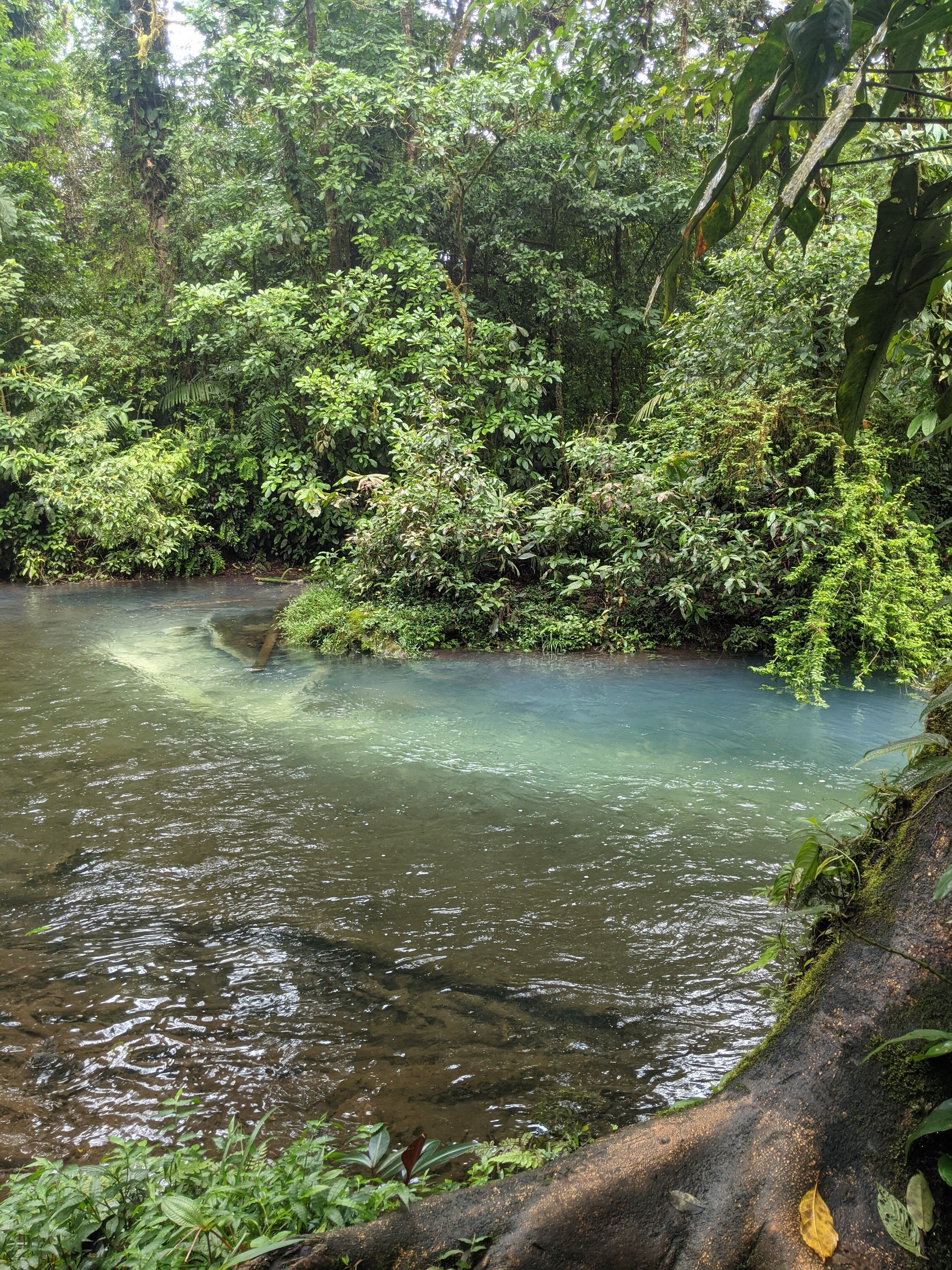 |
Most people come here just for the waterfall, but there is a secret little spot outside the park that you can take a dip in. It’s quite cold but in the afternoon heat it’s exactly what you need. We actually saw a snake swimming upstream just as we were getting out of the water! Below is a still taken from a video we took but it’s not very clear unfortunately – I think it’s most likely a Costa Rican Water Snake (Hydromorphus concolor).
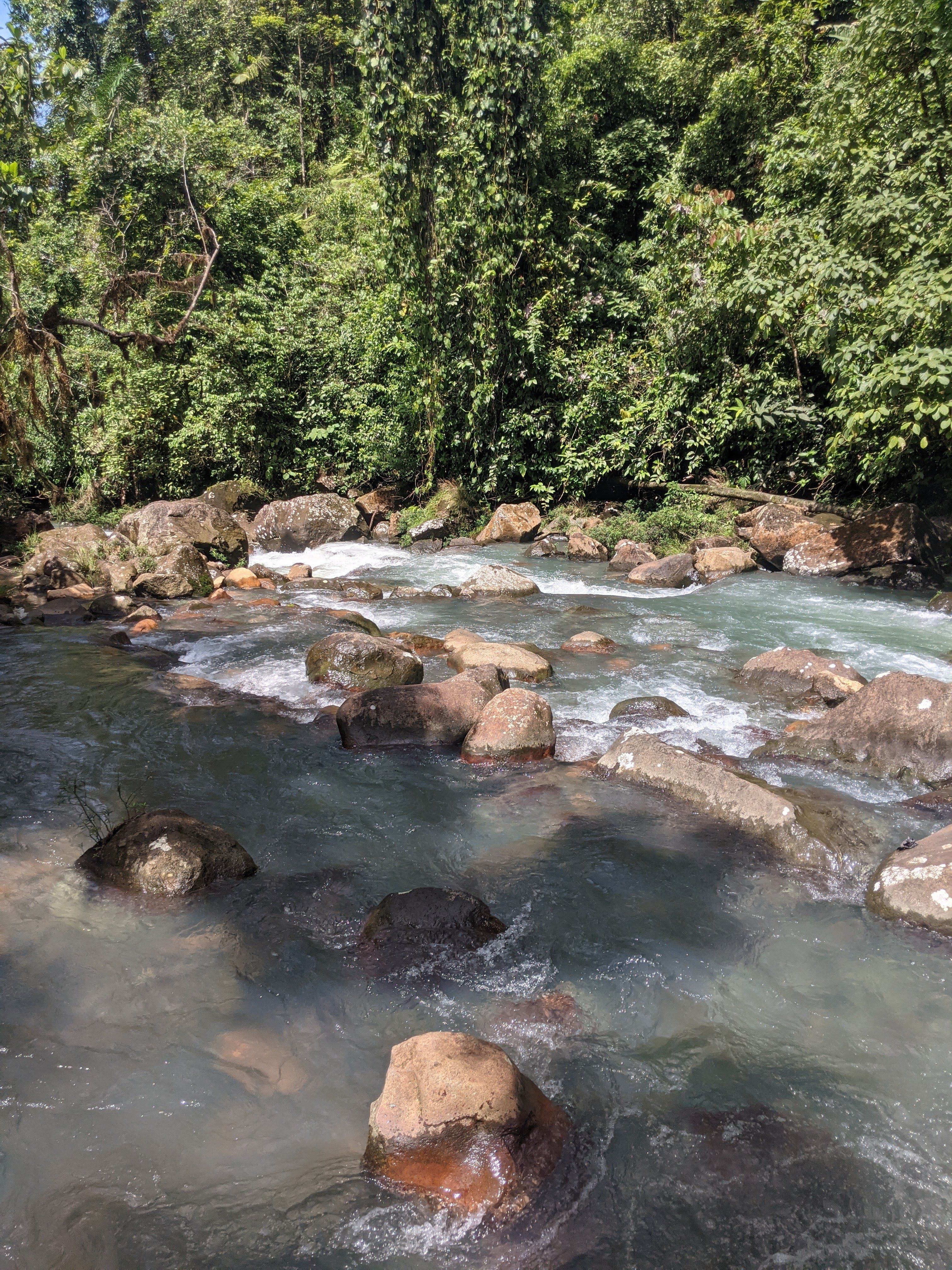 The turqouise colour can be seen here too The turqouise colour can be seen here too |
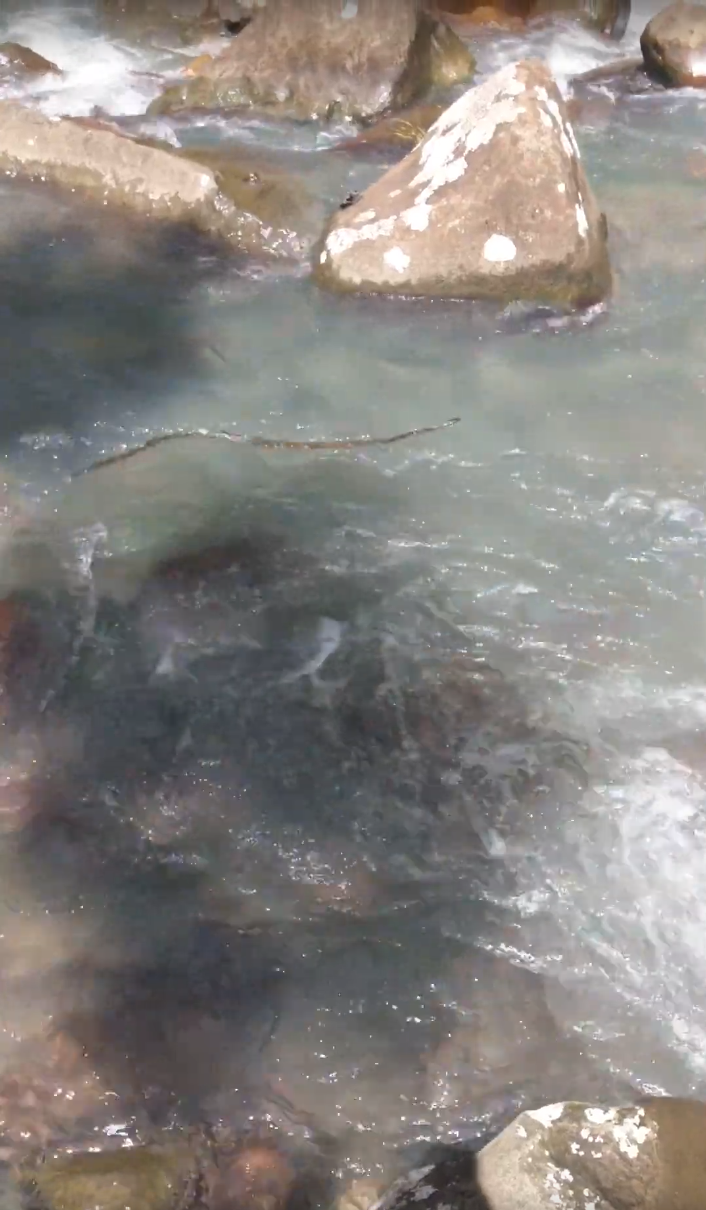 A surprisingly strong swimmer 🐍 A surprisingly strong swimmer 🐍 |
That was pretty much all of the action in La Fortuna, and that’s without mentioning any of the restaurants or other activities we did in detail (like water rafting).
Monteverde

Whilst we were in the heart of Costa Rica, we couldn’t miss going to the cloud forests of Monteverde. There isn’t all that much else to do here so we knew we’d only be there for a few days.
Santa Elena is a tiny town in the mountains of central Costa Rica, but despite its small size it is well worth visiting. The main reason for coming here is to witness the magical forests in which tree crowns gently push through the low hanging clouds.
As is the case with all rainforests, there is a tonne of wildlife to see here; we were very interested in seeing the gorgeous Resplendent Quetzal: a bird of paradise known for it’s kaleidoscopic colours and wonderfully strange calls.
I will describe getting here from La Fortuna using 3 words: jeep, boat, jeep. You’ll see advertisiments for this phrase, or equivalent, all over La Fortuna. It’s the primary method of getting to Monteverde since it avoids going all the way around Lake Arenal, which can take an entire day. It consists of getting a shuttle from La Fortuna to Lake Arenal, then boarding a boat, then another shuttle to Santa Elena. It may sound like a hassle but the drive takes you through the peaks and troughs of the luscious mountains resulting in great views.
The Cloudforest
The guide we met in La Fortuna, Sergio, gave us the number of a friend of his, Eric, a fellow guide. In fact, Eric used to be a researcher and expert of the local area, having several species named after him. He was the old-school explorer-scholar type: his utilitarian khaki gilet had more pockets than you could count, each filled with a a tattered compendium of different endemic bird species. He was a shy, softly spoken man, I estmate in his late 60 or 70s, who lit up with energy whenever he spoke about the wildlife in the area. I distinctly remember his grumbly half-monologue about new discoveries in the epigenome of two bird species previously thought to be different now considered the same, and how that simply made no sense to him. “Too much hair-splitting”, he’d say.
Though Eric didn’t live in Santa Elena, he kindly picked us up from the main street and drove us to the Moteverde Reserve entrance. Tickets were $25 each and Eric’s services cost us another $25 each, plus tips. Not cheap, but I highly recommend getting a guide because they will spot the wildlife and you won’t. Besides, quetzals are tricky to spot – they’re an ellusive, shy bird – guides have telescopes/binoculars and they are trained in spotting wildlife. We came across a group of guides at the entrance (waiting for customers) all pointing their telescopes at the far treeline above: one of them had managed to spot a tiny rare snake in the dense crowns only because a bird “had been acting strange”. 5 minutes later another group formed around a guide who spotted a rare beetle 30 meters up a tree branch. I had trouble seeing it even with a telescope.
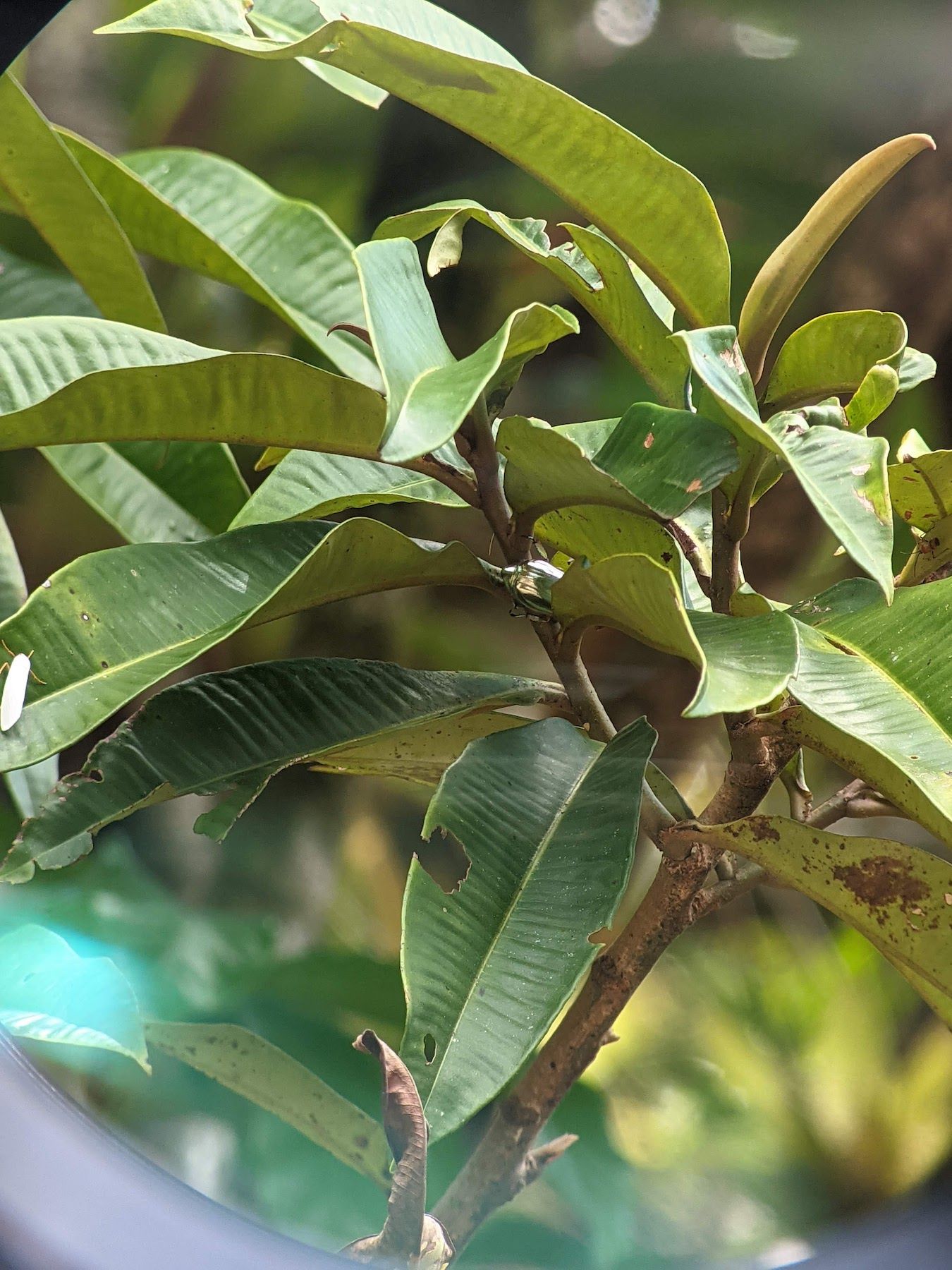 A golden scarab beetle, Chrysina aurigans A golden scarab beetle, Chrysina aurigans |
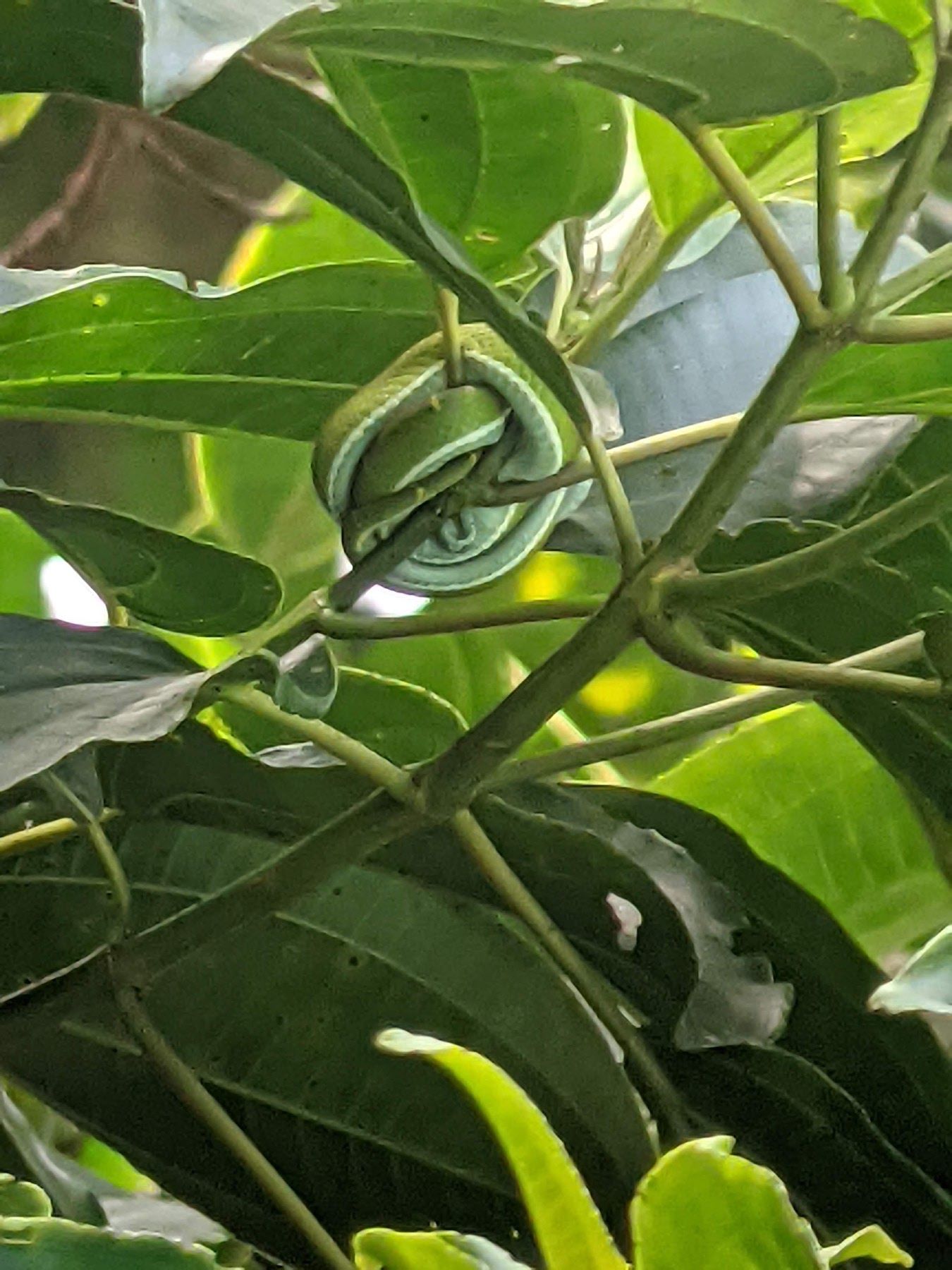 A well camoflauged side stripe pit viper A well camoflauged side stripe pit viper |
Eric would spend some time walking silently before abruptly yet nonchalantly producing an extremely convincing bird call. He taught us that quetzals can do 8-10 different calls and he would demonstrate each one. These birds are highly intelligent and each one has its own twang or accent when singing.
He had an excellent story for us: a few years back, when he was stil an active guide, he worked alongside another colleague who never quite got the hang of some bird calls. One particular quetzal learned to immitate the guide’s ersatz call and from then on the rest of the guides didn’t know if they could hear their colleague or the quetzal’s mimicry!
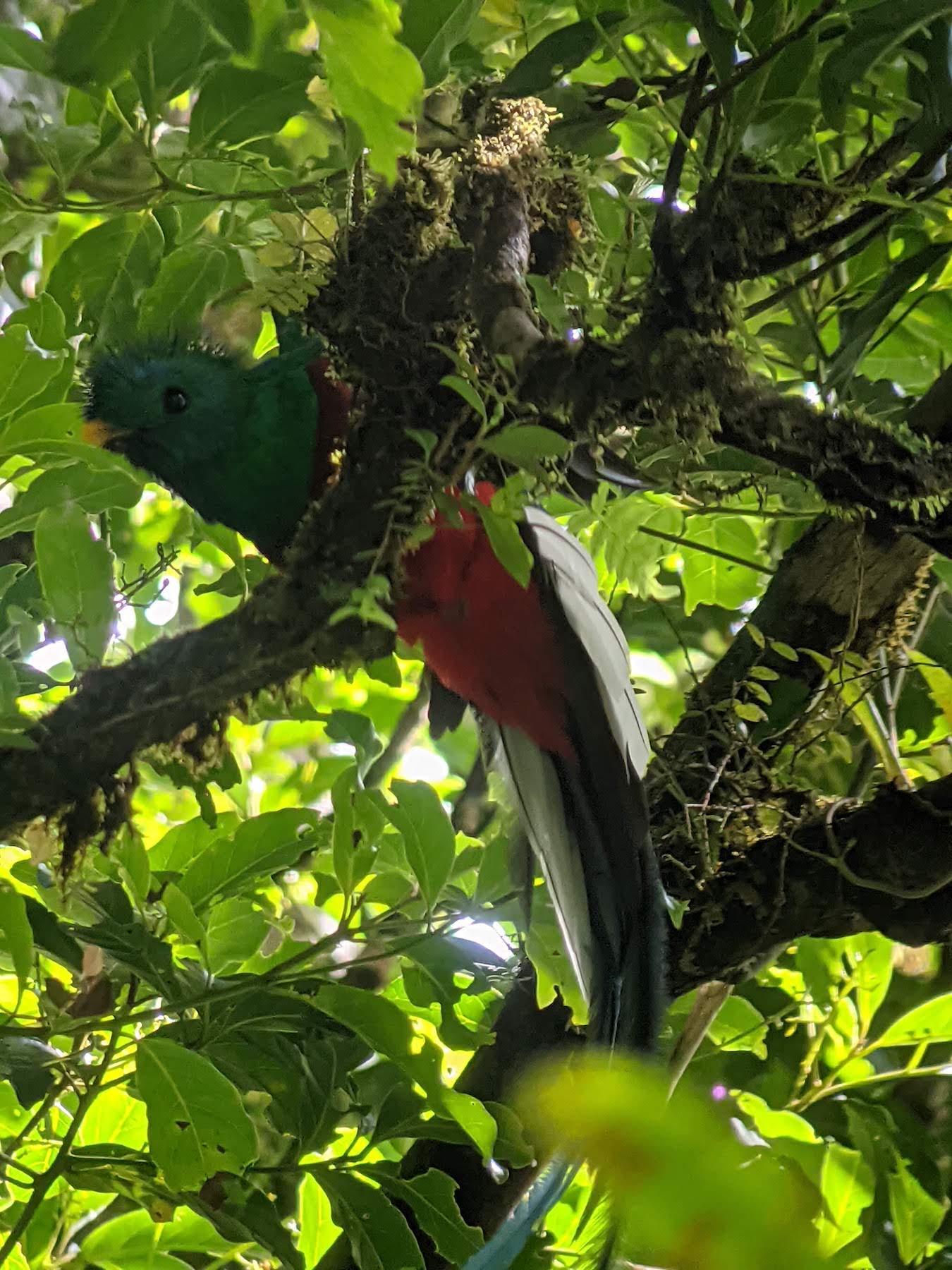 |
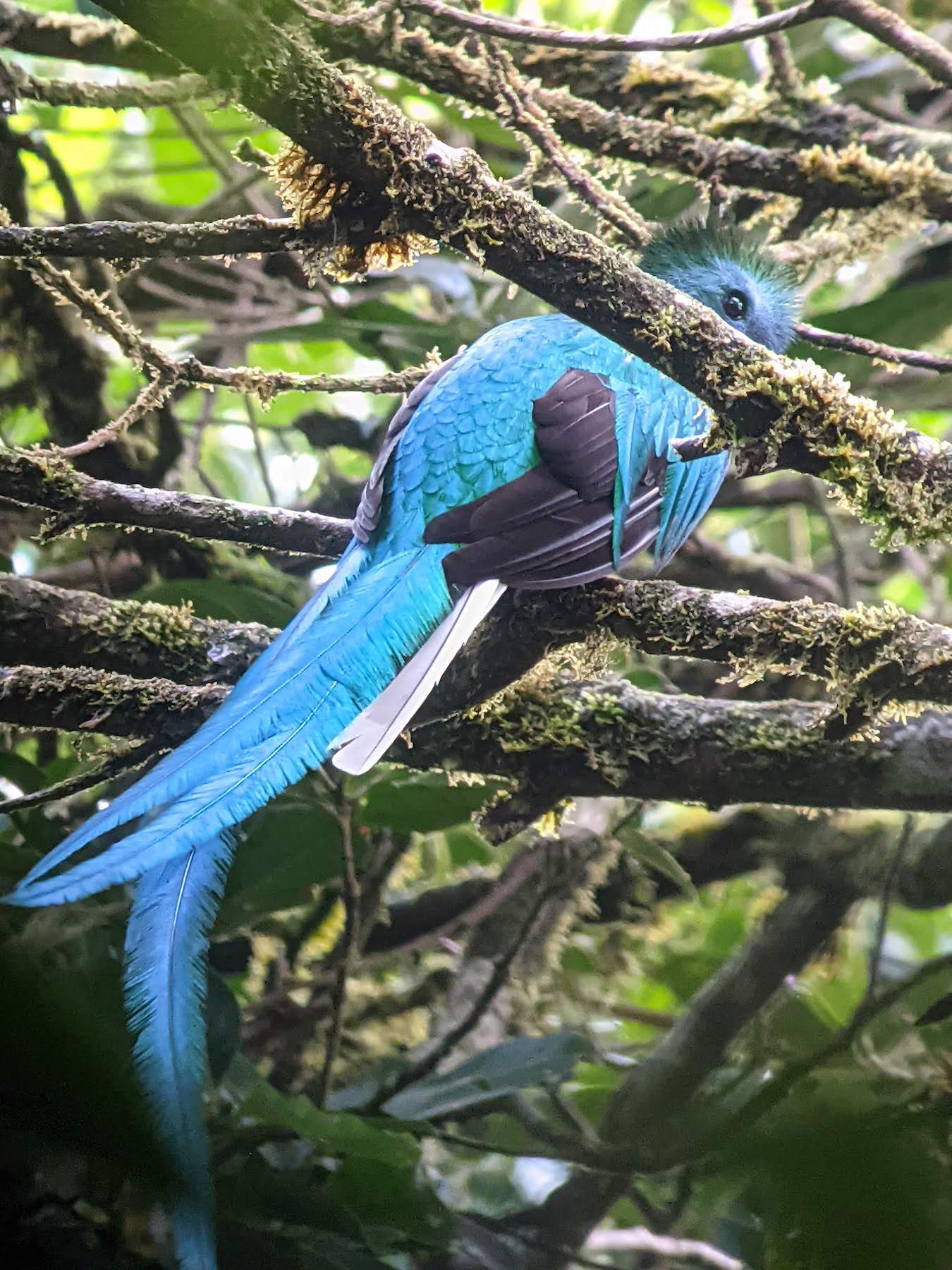 |
I remember expecting to see a little more wildlife in the reserve, but such is the nature of nature; it doesn’t always come out to play. At the end of the day, we got what we came for: quetzals. We did also see a couple of different toucan species, some howler monkeys, various butterfly species and a handful of other birds that I can’t remember the name of.
 |
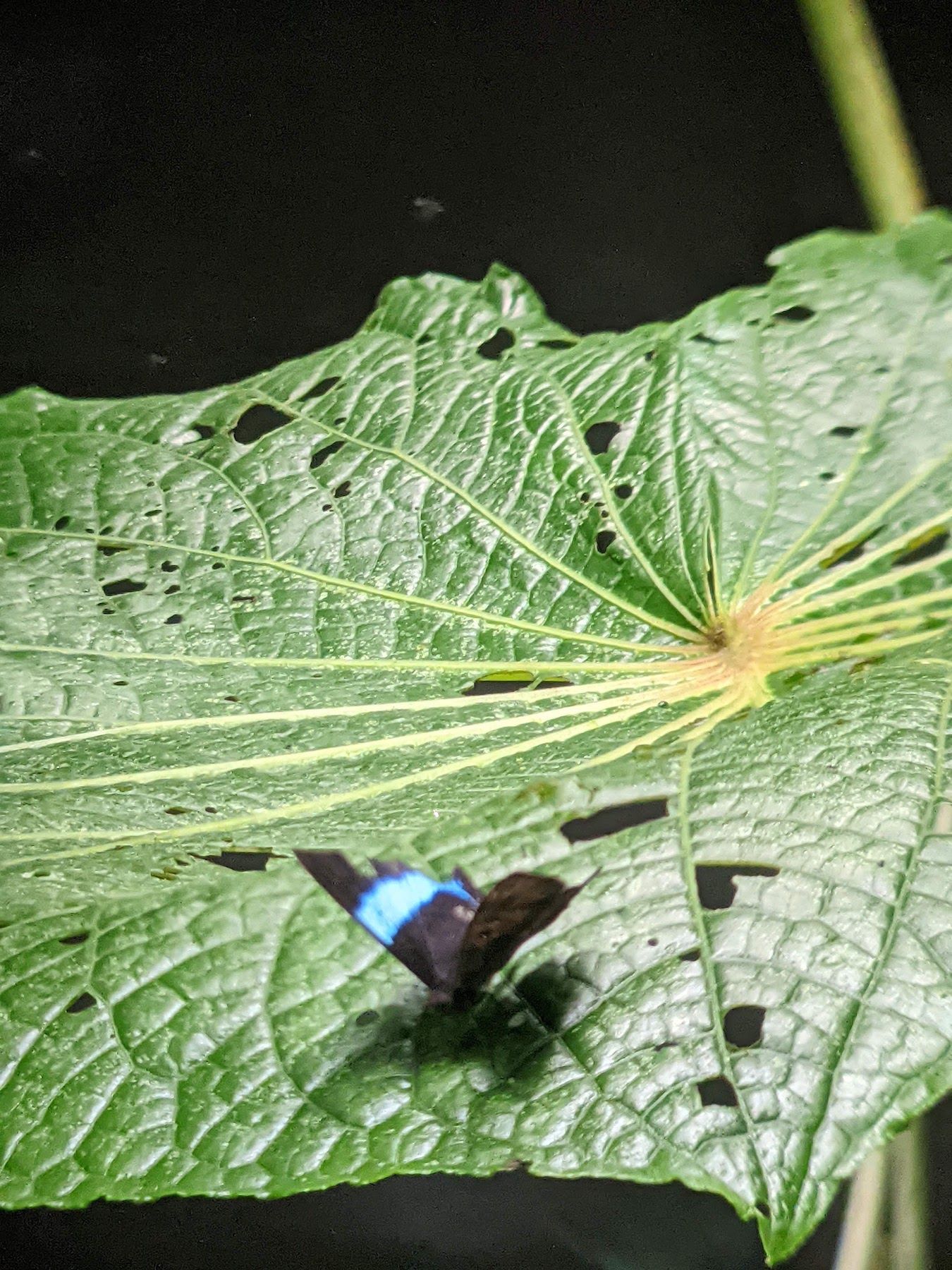 |
Ziplining and Ficus Root Bridge
Santa Elena is pretty small. We were pretty conscious of how expensive some of the activities here are so we didn’t go out to eat or drink. Our hostel had a pretty good kitchen so we whipped up some basic meals to save money.
One of those fund-draining activities is ziplining through the cloud forest canopy. There were a two or three different providers who operate in different local forests. I believe we ended up going to Selvatura Park. It was pretty fun but I didn’t feel like it was some once-in-a-lifetime experience.
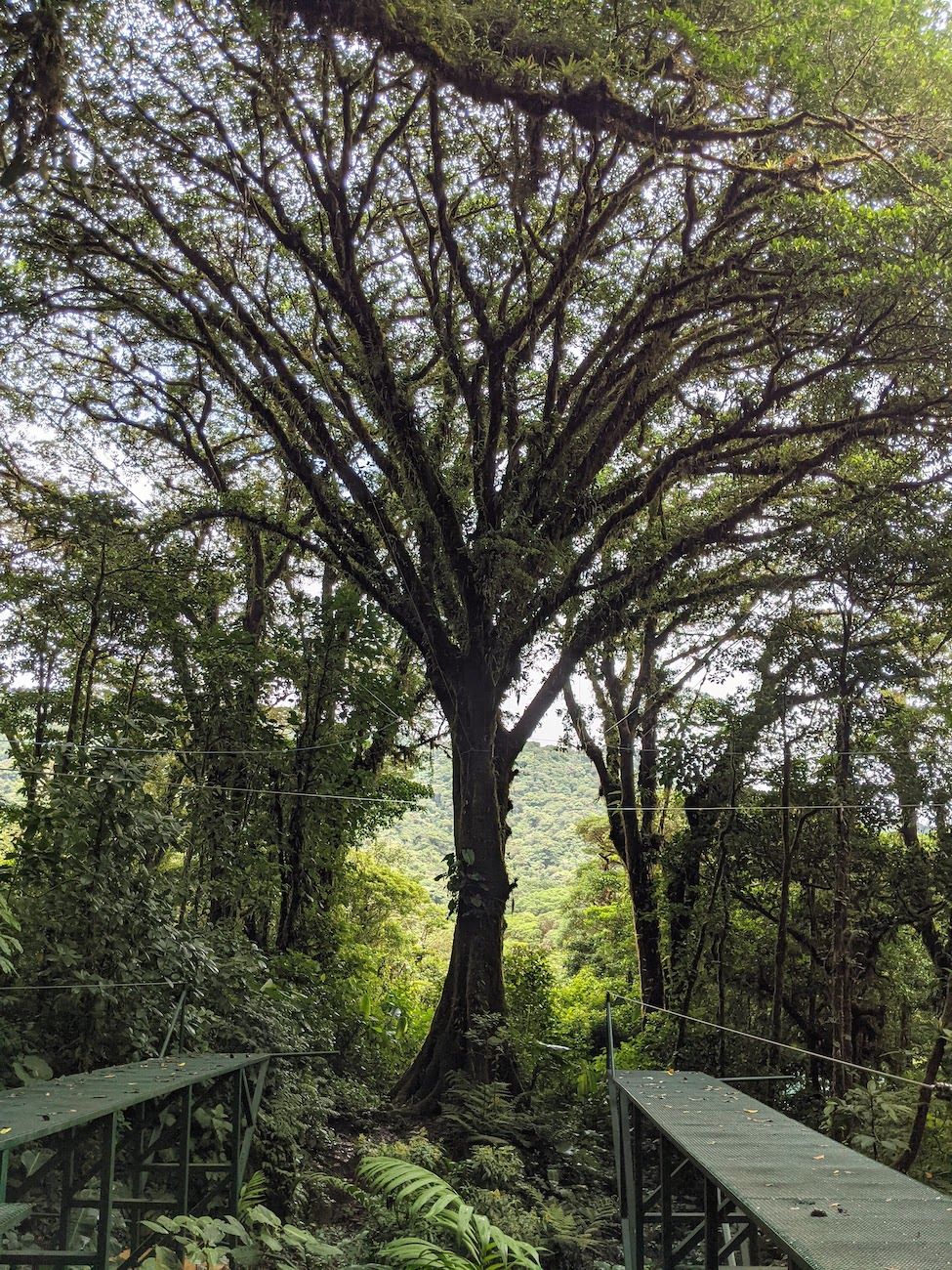 |
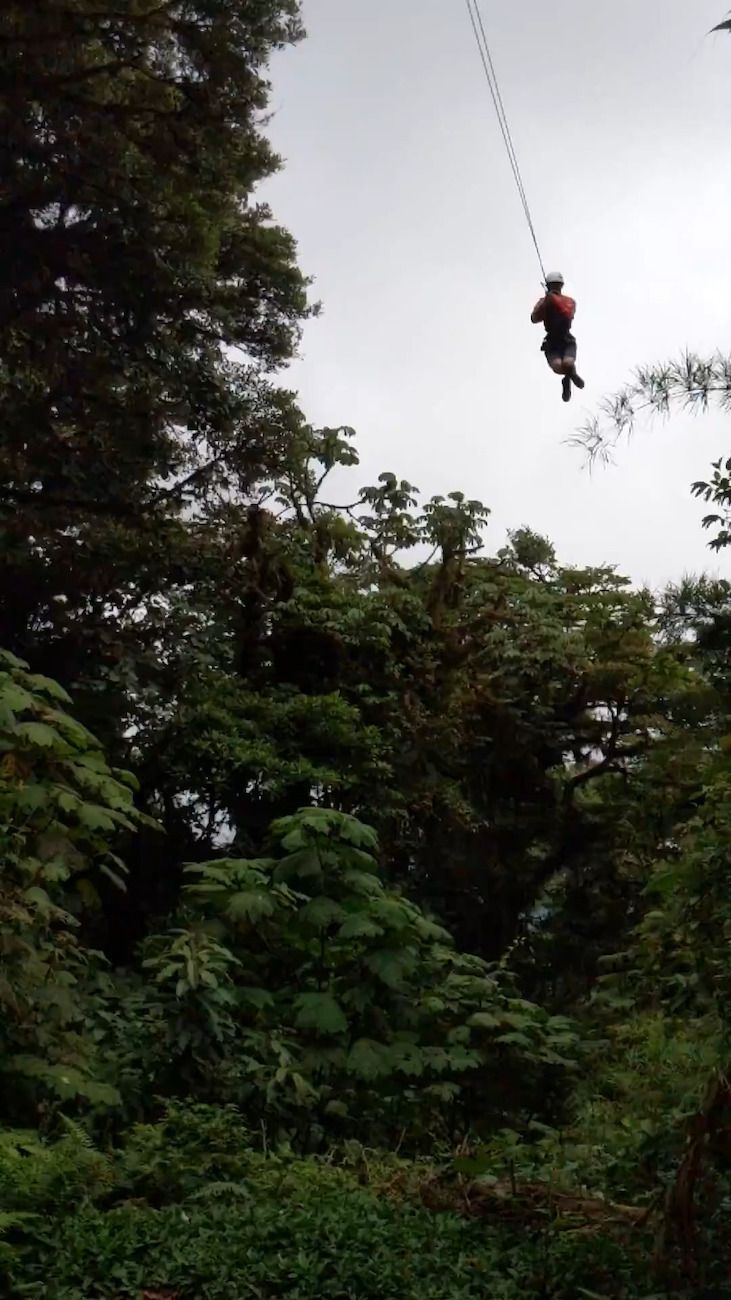 |
We also went to the local (free) attraction, the Ficus Root Bridge. It’s a short walk from the center. We went down some inconspicuous path into the forest which ran alongside a stream. The ficus tree had sprawled its root(s) across the small chasm, creating a natural bridge over the stream. It unfortunately didn’t lead anywhere, but it did make for great Tarzan-esque pictures!
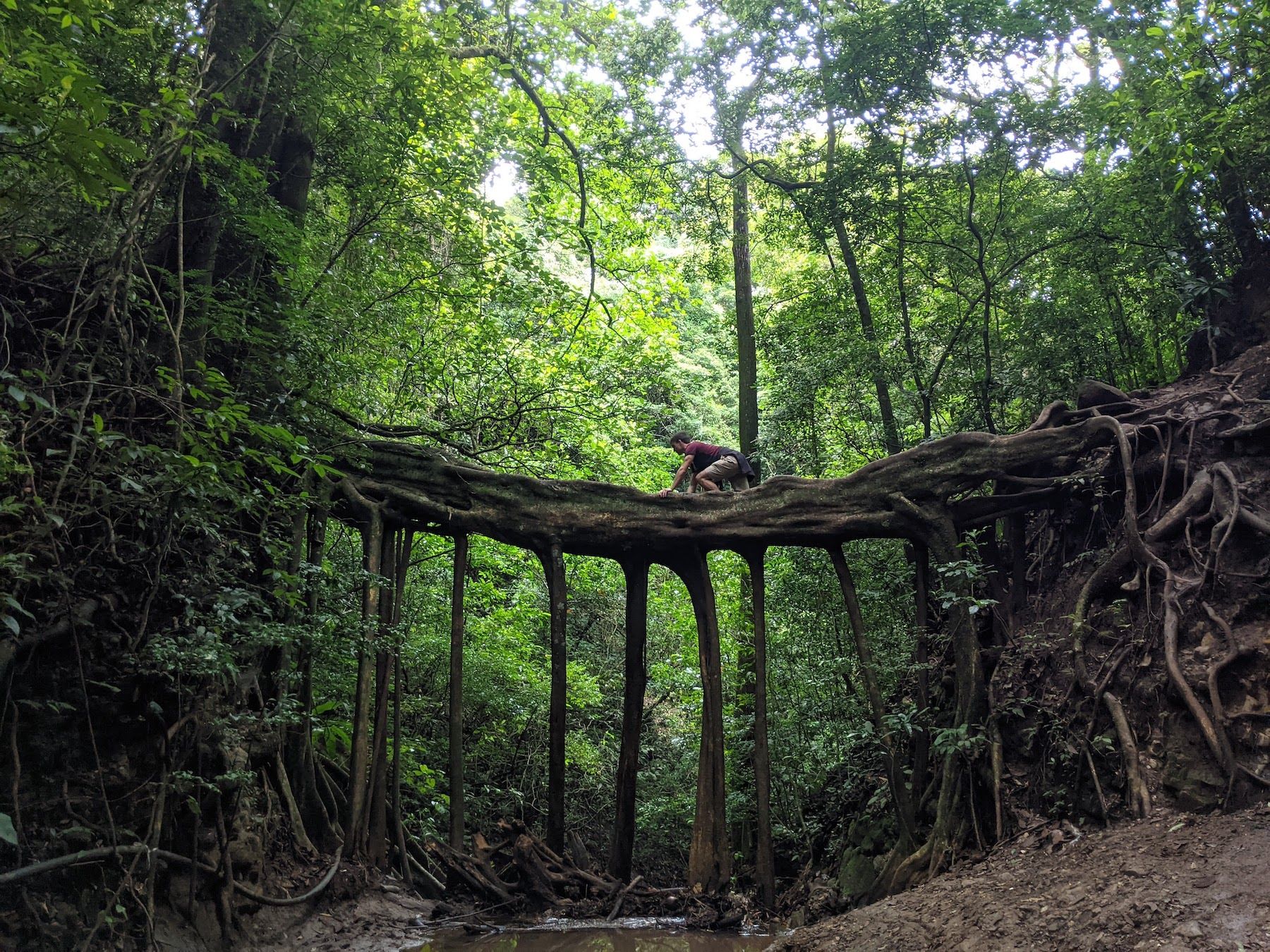
That’s mostly it for Monteverde. At this point we had made plans to go to most southern parts of the country in order to spend 10 days at a turtle conservation eco project, as well as visit the infamous Corcovado National Park, all of it detailed in the next part.
–
Yet to finish writing about the rest of the trip!